How Much Does a Sailing Yacht Cost?
The real cost of owning a sailing yacht.
When looking to purchase a sailing yacht in the UK, there’s a number of things that you’ll need to consider before buying the boat of your dreams. Whether that be the manufacturer, age of the yacht, the components of the sails and the maintenance costs after buying the vessel, the sailing yacht cost can vary from as little as £5,000 right up to £5,000,000 (excluding super yachts).
In this sailor’s guide, we outline exactly what a sailing yacht is, factors that can influence the purchase cost, maintenance fees and where you can buy a sailing yacht in the UK.

What is a sailing yacht?
Factors that influence the purchase price of a sailboat, maintenance fees, where to buy a sailing yacht, how much does a sailing yacht cost – quick summary.
When purchasing a sailing yacht in the UK, make sure to consider factors like brand, model, age, size, location, and demand. A typical yacht price can range from £5,000 to £5,000,000, dependent on your specific requirements. Maintenance fees, including insurance, mooring, and equipment, can be 5-10% of the yacht’s value annually so is a vital factor to consider when you weigh up the costs of buying a sailing yacht. There is a range of expert yacht brokers at Clipper Marine that can assist you during your search for the perfect sailing yacht.
A sailing yacht or sailboat is a boat that’s main power source is the wind, which is captured by the mainsail and headsail to propel the boat forwards. The sails consist of the mainsail, headsail and spinnaker.
Sailing yachts can be typically measured at 10m in length, however some vessels can come in longer.
As with everything sailors buy, sailing yachts and sailboats are no different in that they can vary greatly in price.
Location and demand
Sailing yachts are often linked to the rich and famous who harbour their vessels off the coast of luxury harbours and whilst this has some truth to it, they are easily accessible for ‘ordinary’ people who want to explore a new hobby or pastime. Some sailing yachts are more expensive in certain locations across the globe (such as Monaco and Dubai ) because of mooring costs, the desirability to store and buy boats in certain marinas and sometimes the exchange rate.
For example, those in the UK will be paying an average global rate for sailing yachts, whereas those in the Middle East will be buying their boat at a premium rate.
Brand and model
Sailing yachts and sail boats from leading brands such as Bavaria and Bali are always in demand and with newly released models each year, prices can go up and down depending on what brand and model you choose to purchase. Sailing yachts from industry-leading manufacturers like Beneteau can fetch anything up to £1,000,000 brand-new, whereas a used sailboat from a lesser-known brand such as Sabre can be as little as £5,000 so the purchase price can hugely differ depending on what manufacturer you choose to go with.
Age and size of the sailing yacht
Another factor that can influence the cost of a sailing yacht is the age and size of the vessel. Typically, new sailing yachts fetch a higher value than their used counterparts simply due to the age of the vessel, so you’ll need to consider whether you’re desperate to buy a new or used sailboat .
In addition to the age and condition of the yacht, the size of it can influence the cost too. A smaller boat like the Bali Catspace Sail will typically cost less compared to a larger vessel such as the Bavaria C57 . The size of a deck, how many cabins there are on-board, the living space, condition of the sails and other features on the yacht can push the price up as these tend to be more desirable among sailors.
Whilst the initial purchase price of a sailing yacht is a one-off payment, there are ongoing costs to keep your vessel in the best condition it can be. As a ball-park figure, it can cost 5% – 10% of the yacht’s total value each year to maintain, store, insure and run.
Typical yacht maintenance costs
- Mooring costs
- Maintenance costs of the yacht, equipment and sails
- Travel costs
- Wintering and dry dock
- Extras and contingencies
- Paying a fixed monthly fee
Here at Clipper Marine yacht brokerage , we have sales offices across the UK and Spain so you’re never far from purchasing your dream sailing yacht. The team here at Clipper Marine can help find the perfect sailboat for your exact requirements, whether that be from a prestigious brand like Bavaria and Bali, we have stock of sailing yachts across the UK and Spain .
If you’re considering buying a new or used boat , speak to one of our yacht brokers who can help further.
Clipper Marine Mailing List
Breaking rules, setting trends
- Open search box
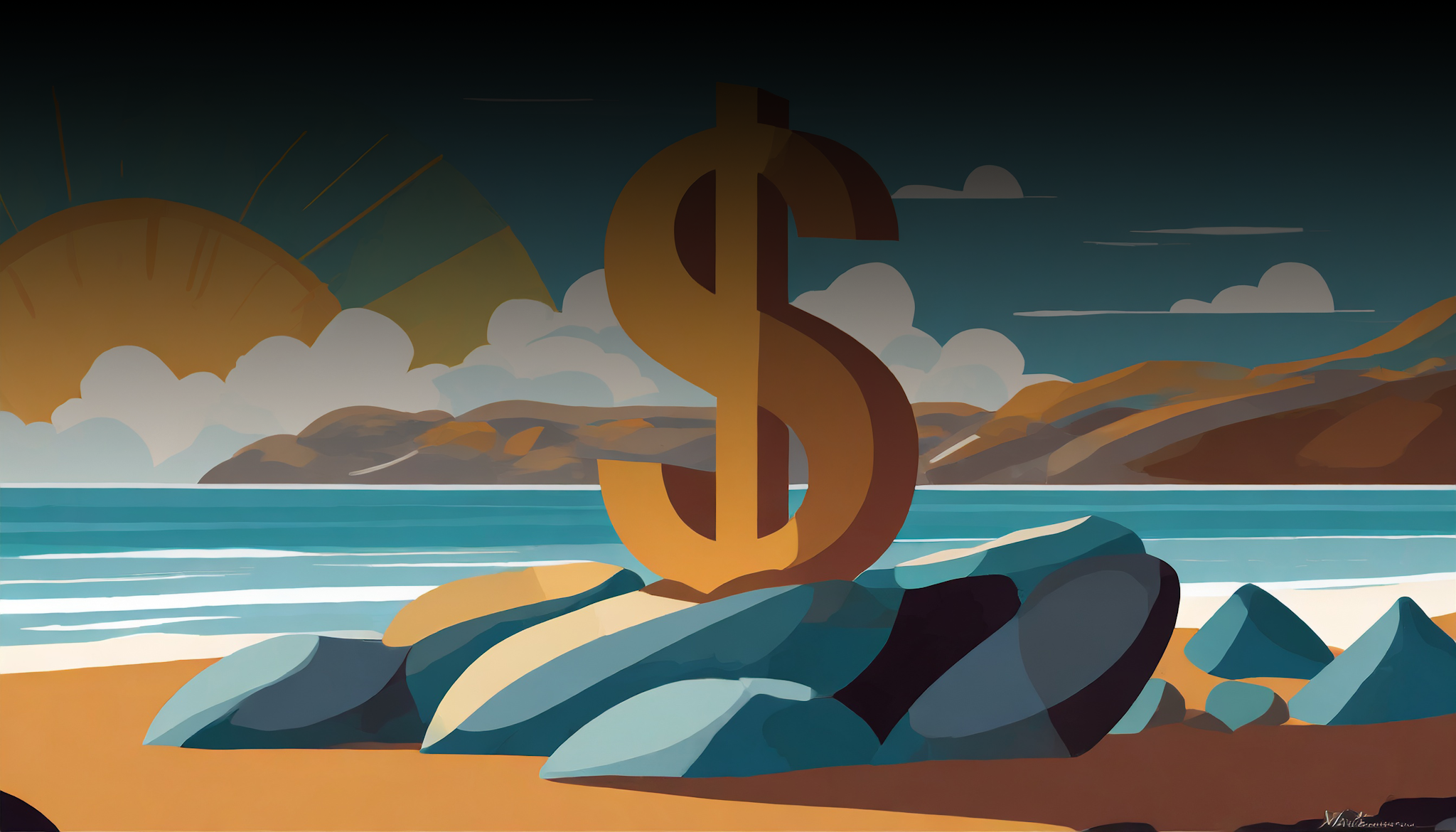
Sailing yacht running costs: a guide to savings & expenses
Understand the costs of sailboat ownership, from maintenance to storage and insurance, and discover 8 practical cost-saving tips to keep your outlays in check.
When it comes to yacht ownership, the iceberg analogy holds true: the initial purchase price is just the tip, while a matrix of additional sailing costs lurks beneath the surface. Yet, with diligent financial planning and savvy economising strategies, these can be effectively managed and need not become a daunting prospect.
This guide breaks down the financial aspects of owning a sailing boat and provides a detailed look at each expense, revealing potential hidden figures, and setting realistic expectations for the overall investment. Best of all, it weaves in cost-saving tips and strategies shared by real yacht owners who have navigated these waters and learned to keep their dreams afloat without sinking their budgets.
The initial purchase effect on the running costs
The influence of new vs. used boats: a cost-benefit analysis .
Beyond the initial purchase price, the decision to buy new or used can significantly influence the subsequent yacht running costs. Each option has its pros and cons in terms of cost, quality, and equipment included.
Buying new: While this option is pricier, it provides state-of-the-art equipment and ensures a boat in mint condition. It also offers extensive customisations in color, material, and equipment, unlike buying a used boat with someone else's choices.
Buying used: A pre-loved boat may have higher maintenance costs due to wear and tear, but it can be more affordable upfront. Also, previous owners may have made improvements or modifications, adding value that lasts beyond the initial purchase.

Conduct thorough market research before buying, even when purchasing new yachts. Negotiate prices using insights from guides, forums, and brokerage sites. Never skip a pre-purchase survey; it can reveal issues that provide bargaining power, potentially lowering both your upfront and future sailing costs.
Ongoing boat running costs
Now that you've found a way to finance the initial cost of your sailboat , it's time to budget for the ongoing expenses. Here's what to consider:
Sailing boat maintenance costs
Routine maintenance, including cleaning, painting, and servicing the auxiliary engine, is essential to keep your sailing boat in prime condition. In the UK, the average cost for this can range between £200 to £500, and it's advised to service your boat annually. Your sails and rigging also need regular inspection and occasional replacement.
You can opt for a DIY approach or hire professional assistance. While the former can save money initially, professionals not only provide a thorough job, but often offer a warranty, potentially safeguarding against future costly repairs.
Regular maintenance can prevent more significant issues down the line. Consider learning basic maintenance skills to save on professional service costs. Remember, a well-maintained boat has a higher resale value.
Yacht berthing and storage
Mooring fees fluctuate considerably depending on location and season, with marinas usually charging on a per-metre basis. For example, popular coastal spots during peak season can be pricey, whereas inland marinas might offer more affordable rates. Dry storage becomes essential, particularly during winter in colder climates. The cost of such facilities also varies widely, factoring in aspects like security, climate control, and accessibility.
Consider off-season berthing or mooring options, which are often significantly cheaper than peak season rates.
Sailing boat insurance
Sailboat insurance costs depend on several factors, including boat value, owner's experience, and sailing area. Coverage varies across policies but generally includes hull, machinery, equipment, and third-party liability - with additional options such as coverage for personal effects on the boat or environmental damage liability may be available. It's also important to consider that some companies offer agreed-value policies that guarantee the insured amount rather than actual cash-value policies that factor in depreciation, which can significantly impact your financial protection in the event of a loss.
Look for insurers who offer discounts for experience, sailing qualifications, or choosing a higher excess. A no-claim bonus can also reduce your premium.
Operational cost of boat ownership
The operational costs of yacht ownership extend to provisions and essential equipment's inevitable wear and tear. This includes ropes, which face deterioration from elements such as UV radiation and salt water, thus requiring regular replacement. Similarly, sails, being subjected to wind stress and variable weather conditions, demand frequent inspections for repairs or, over time, complete replacement.
Fuel costs for your auxiliary engine will also be a regular expense. These can vary widely and are influenced by factors such as the size and efficiency of your engine, how often and in what conditions you're sailing, and the current fuel prices in your sailing area.
Optimise your sailing technique for wind conditions to minimise reliance on the engine, saving fuel costs.
Sailing training and boat licensing
Obtaining necessary sailing qualifications and licences comes with associated costs, which are crucial investments in your safety and legal compliance. Options range from practical approaches such as the Royal Yachting Association (RYA) Competent Crew and Day Skipper courses to theory-based programs like the Yachtmaster Offshore and Ocean exam . Not only do these certifications equip you with essential sailing skills, they are often required for insuring your vessel and can be beneficial in reducing your insurance premium.
Consider group training courses, which are often cheaper than private lessons.
Boat cleaning and safety equipment
Caring for your sailing yacht goes beyond mere aesthetics; it's about safeguarding your investment. Regular cleaning preserves the boat's appearance and prevents long-term damage caused by corrosive saltwater and UV exposure. Similarly, investing in essential safety equipment like lifejackets, flares, fire extinguishers, and navigation lights is non-negotiable. These items ensure you're prepared for emergency situations at sea, thereby providing peace of mind for both you and your crew.
Regular cleaning can prevent the build-up of grime and marine growth, leading to lower maintenance costs in the long run.
Regulatory yacht running costs
Regulatory sailing costs are an oft-overlooked aspect of yacht ownership but can add up depending on your sailing habits and chosen locations. Depending on the type of water activities you pursue, you may need boating permits or fishing licences. In addition, certain waterways might impose their own fees - all of which are influenced by factors such as your boat size, the time of year, or your stay duration.
Thoroughly research permit and licensing costs for your intended sailing area. Planning your routes can also help avoid unexpected fees.
Summing up: sailboat running cost saving tips
Make informed choices: Utilise market insights to negotiate prices and always conduct a pre-purchase survey for potential bargaining power.
Invest in regular maintenance: Regular maintenance can help prevent bigger issues and increase the resale value of your boat.
Off-season berthing: Consider off-season berthing or mooring options for cost efficiency.
Insurance discounts: Opt for insurers offering discounts for experience, qualifications, or higher excess. A no-claim bonus can also lower your premium.
Energy efficiency: Minimise reliance on the engine by optimising your sailing technique, reducing fuel costs.
Group training: Opt for group training courses which are usually cheaper than private lessons.
Regular cleaning: Regular cleaning prevents grime and marine growth build-up, lowering maintenance costs over time.
Plan ahead: Research permit and licensing costs thoroughly for your intended sailing area and plan your routes to avoid unexpected fees.

- How It Works
Member's Portal Login
Username or Email Address
Remember Me
FlexiBook System
Log into the calendar to reserve the boats
Login to FlexiBook
Breaking Down the True Cost of Boat Ownership in the UK

Are you tired of the high costs and maintenance associated with owning a boat? Well, get ready to set sail into a new era of boating with shared boat ownership. As technology continues to revolutionise our lives, it’s no surprise that it’s also transforming the way we enjoy recreational activities. Boat Club’s and shared boat ownership is quickly gaining popularity as a cost-effective and hassle-free solution for boating enthusiasts. In this article, we will dive into the future of boating and explore the numerous benefits of shared boat ownership and a Boat Club with membership. From reduced costs and maintenance responsibilities to increased flexibility and access to a variety of boats, shared boat ownership or a Boat Club offers an exciting alternative to traditional boat ownership. Whether you’re an avid sailor or a weekend adventurer, join us as we embark on a journey to discover the incredible advantages that shared boat ownership can bring to your boating experience.
Initial Purchase Costs
When it comes to boat ownership, one of the most significant expenses is the initial purchase cost. Buying a new boat can be a substantial financial investment, with prices ranging from a few thousand pounds to several hundred thousand pounds or more, depending on the type and size of the boat. However, a Boat Club allows you to use a boat owned by someone else, or shared ownership with other co-owners, significantly reducing your financial burden. By sharing the initial purchase cost, or joining a Boat Club, you can enjoy the benefits of owning a boat without breaking the bank.
Furthermore, shared membership boating provides access to a wider range of boats that you might not be able to afford on your own. Whether you’re interested in sailing, fishing, or cruising, there are boat share schemes that cater to different preferences and budgets. This means you can choose a boat that best suits your needs and enjoy the boating experience without compromising on your financial goals.
Additionally, shared boat ownership often includes professional management services that take care of the administrative tasks associated with boat ownership, such as registration, licensing, and documentation. This not only saves you time and effort but also ensures that your boat remains in compliance with all legal requirements.
In summary, shared boat ownership and Boat Clubs offers a more affordable way to own a boat, allowing you to share the initial purchase cost with other co-owners and access a wider range of boats that suit your budget and preferences.
Ongoing maintenance and repair expenses
Apart from the initial purchase cost, another significant factor to consider when it comes to boat ownership is the ongoing maintenance and repair expenses. Boats require regular maintenance to keep them in good working condition and ensure their longevity. From cleaning and hull maintenance to engine servicing and repairs, these costs can quickly add up.
However, shared boat ownership or joining a Boat Club can help alleviate the financial burden of maintenance and repairs. In most shared ownership programs, the responsibility for maintenance and repairs is usually the responsibility of the membership boating club or shared among the co-owners, with each contributing a portion of the costs. This not only reduces the individual financial burden, but also ensures that the boat is well-maintained and kept in optimal condition.
By entrusting the maintenance and repair responsibilities to professionals, you can enjoy peace of mind and spend more time on the water, knowing that your boat is in good hands.
Insurance and licensing fees
When it comes to boat ownership, insurance and licensing fees are essential considerations. Just like any other vehicle, boats need to be insured and licensed to ensure compliance with legal requirements and protect against potential accidents or damages. However, these fees can vary depending on factors such as the type and size of the boat, your location, and your boating experience.
Shared boat ownership often includes insurance and licensing fees as part of the ownership program. By pooling resources with other co-owners, you can benefit from group insurance policies that offer lower premiums compared to individual policies. This not only reduces your insurance costs but also provides comprehensive coverage for your boat, including liability protection and coverage for damages.
Furthermore, boat clubs typically handle all the necessary paperwork and administrative tasks related to licensing and registration. This saves you time and effort while ensuring that your boat remains legally compliant.
Mooring and storage costs
In addition to purchase costs, maintenance expenses, and insurance fees, another significant expense associated with boat ownership is mooring and storage. Finding a suitable mooring location for your boat can be challenging, especially in popular coastal areas where demand often exceeds supply. Additionally, mooring fees can vary depending on factors such as the location, facilities available, and the size of your boat.
Shared boat ownership or a Boat Club can help alleviate the challenges and costs associated with mooring and storage. Many shared ownership programs include access to dedicated mooring facilities or partnerships with marinas, ensuring that you have a secure and convenient place to keep your boat. By sharing the mooring costs with other co-owners or having them covered, means you can enjoy the benefits of a prime mooring location without the exorbitant expenses.
Fuel and operating expenses
When it comes to boating, fuel and operating expenses are ongoing costs that need to be considered. The amount of fuel a boat consumes depends on factors such as the type and size of the boat, the speed of operation, and the distance travelled. Additionally, operating expenses may include costs for amenities such as electricity, water, and waste management.
A Boat Club or shared boat ownership can help reduce fuel and operating expenses through efficient management and planning. Many shared ownership programs implement fuel management systems that track and allocate fuel costs based on usage. This ensures fair distribution of expenses among the co-owners and promotes responsible fuel consumption. Additionally, shared ownership programs often negotiate discounted fuel rates with local suppliers, further reducing the cost of fuel.
Furthermore, shared boat ownership programs typically handle the logistics of amenities such as electricity, water, and waste management. This ensures that these services are readily available and properly maintained, saving you time and effort.
Depreciation and resale value
One aspect of boat ownership that is often overlooked is depreciation and resale value. Like any other vehicle, boats depreciate over time and lose value. However, shared boat ownership can help mitigate the impact of depreciation and potentially enhance the resale value.
By sharing the ownership of a boat, the depreciation is shared among the co-owners, reducing the individual financial loss. In addition, Boat Club membership models often have well-maintained boats that retain their value better than privately owned boats. This can result in a higher resale value if you decide to sell your share of the boat in the future.
Furthermore, a Boat Club allows you to experience different types and models of boats. This gives you the opportunity to explore and find the boat that best suits your preferences and needs.
Additional expenses to consider
Aside from the main costs associated with boat ownership, there are additional expenses that you should consider when evaluating the true cost of owning a boat. These expenses may include boating accessories, safety equipment, navigation tools, fishing gear, and other personal preferences.
Boat Club programs often include the option to purchase or rent additional equipment and accessories at discounted rates. This allows you to enjoy the benefits of owning a boat without the need to invest in all the necessary items upfront. Additionally, shared ownership programs may offer access to shared amenities such as fishing gear, water toys, and recreational equipment, further enhancing your boating experience.
Budgeting and financial planning for boat ownership
Now that we have explored the various costs associated with boat ownership, the benefits of shared boat ownership and Boat Club’s, it’s essential to consider budgeting and financial planning. Owning a boat, whether individually or through shared ownership, requires careful financial management to ensure that you can afford the ongoing costs and enjoy a worry-free boating experience.
When considering boat ownership, it’s crucial to assess your current financial situation and determine how much you can comfortably allocate towards boat ownership expenses. This includes not only the initial purchase cost but also ongoing costs such as maintenance, insurance, mooring, and fuel. By creating a realistic budget and sticking to it, you can avoid financial strain and enjoy the benefits of boat ownership without compromising your financial stability.
In addition to budgeting, it’s also essential to consider factors such as your boating frequency, desired boat type and size, and long-term financial goals. These factors will help guide your decision-making process and ensure that you make an informed choice when it comes to boat ownership. Additionally, it’s always a good idea to consult with financial advisors or boat ownership experts who can provide guidance and assistance in your financial planning.

How Much does it Cost to Own a Sailing Boat in the UK?
Published by sail on march 7, 2023 march 7, 2023, how much does it cost to own a sailing boat in the uk.
The cost of owning a sailing boat in the UK can vary widely depending on several factors, such as the size and type of boat, age, condition, location, storage options, and maintenance requirements. Here are some of the major expenses associated with owning a sailing boat in the UK:
Purchase price: The initial cost of buying a sailing boat in the UK can range from a few thousand pounds for a small used boat to several hundred thousand pounds for a new, high-end model.
Mooring fees: Depending on the location and size of the boat, mooring fees can range from a few hundred pounds to several thousand pounds per year. In some areas, you may also have to pay additional charges for electricity, water, and other services.
Insurance: Boat insurance is essential to protect against damage, theft, and liability. The cost of insurance can vary depending on the value of the boat, its age, and your sailing experience.
Maintenance and repairs: Regular maintenance and repairs are necessary to keep your boat in good condition and ensure safe and enjoyable sailing. These costs can include engine servicing, hull repairs, sail replacement, and other upkeep expenses.
Equipment and accessories: Depending on your sailing needs and preferences, you may need to invest in equipment and accessories such as safety gear, navigational aids, communication devices, and other gadgets.
Overall, the annual cost of owning a sailing boat in the UK can range from a few thousand pounds for a small, used boat to tens of thousands of pounds for a larger, new boat with all the necessary equipment, mooring, and maintenance costs. It’s essential to factor in all these expenses when considering whether owning a boat is financially feasible for you.
How much is the cost of insuring a sailboat in the United Kingdom?
The cost of insuring a sailboat in the United Kingdom can vary depending on several factors, such as the type and size of the boat, its age, value, and usage, as well as the owner’s sailing experience, location, and insurance history. Here are some of the key factors that can affect the cost of sailboat insurance in the UK:
- The size and value of the boat : Generally, the larger and more expensive the boat, the higher the insurance premium. The value of the boat also affects the level of coverage and deductible.
- The type of boat : Different types of sailboats have different risks and require different types of coverage. For example, racing boats may require special coverage for regattas and racing events.
- Usage : How and where the boat is used can impact the insurance premium. For example, if the boat is used for commercial purposes, such as chartering, the insurance cost may be higher.
- Owner’s experience : The owner’s sailing experience and insurance history can also influence the cost of insurance. Owners with more experience and a clean claims record may qualify for lower premiums.
Based on these factors, the cost of sailboat insurance in the UK can range from a few hundred to several thousand pounds per year. A small, used sailboat may cost a few hundred pounds per year to insure, while a larger, new boat may cost several thousand pounds per year. It’s important to shop around and compare quotes from different insurance providers to find the best coverage and price for your specific sailboat and sailing needs.
How expensive are marinas’ berths for a sailing yacht in England?
The cost of marina berths for a sailing yacht in England can vary depending on several factors, such as the location, size of the boat, length of stay, and the facilities and services provided by the marina. Here are some approximate costs for marina berths in England:
South Coast : Berthing fees for a 40-foot sailing yacht in popular marinas on the south coast of England can range from around £3,000 to £6,000 per year, with additional charges for electricity, water, and other services.
East Coast : Berthing fees for a 40-foot sailing yacht in marinas on the east coast of England can range from around £2,000 to £4,000 per year, with additional charges for services.
West Coast : Berthing fees for a 40-foot sailing yacht in marinas on the west coast of England can range from around £2,500 to £4,500 per year, with additional charges for services.
It’s worth noting that some marinas offer discounts for longer-term contracts, and fees may be higher during peak season or for larger boats. Additionally, some marinas may have waiting lists for berths, particularly in popular locations, which may affect availability and pricing. It’s always advisable to check with individual marinas for up-to-date pricing and availability information.
Which are the taxes of owning a sailing boat in England?
There are several taxes and fees associated with owning a sailing boat in England. Here are the main ones:
Value Added Tax (VAT) : If you purchase a new or used boat in the UK or import a boat from outside the EU, you may need to pay VAT. The current standard rate of VAT in the UK is 20%, and this applies to most boats.
Annual Mooring Fees : If you moor your boat in a marina or harbor, you will need to pay annual mooring fees, which can vary depending on the location and size of the boat.
Boat Safety Scheme (BSS) : All boats in the UK are required to have a BSS certificate, which ensures that the boat meets certain safety standards. There is a fee for the BSS inspection and certificate, which is renewable every 4 years.
Insurance Premium Tax (IPT) : This is a tax on insurance premiums, including boat insurance. The current IPT rate in the UK is 12%.
Fuel Duty : If you use diesel or petrol to power your boat, you will need to pay fuel duty. The current fuel duty rate for marine fuel in the UK is 42.6 pence per litre.
Customs Duty : If you import a boat from outside the EU, you may need to pay customs duty. The rate of duty depends on the value and type of the boat.
It’s important to note that the taxes and fees associated with owning a sailing boat in England can change, and the above list is not exhaustive. It’s always advisable to check with relevant authorities or a professional advisor for up-to-date information on taxes and fees associated with owning a sailing boat in England.
How much is Custom Duty in UK for a sailing yacht?
The amount of customs duty payable on a sailing yacht imported into the UK will depend on several factors, including the value and origin of the yacht.
If the yacht is being imported from within the European Union, there is generally no customs duty payable. However, if the yacht is being imported from outside the EU, it may be subject to customs duty.
The current rates of customs duty on boats vary depending on the type of boat and its country of origin. For example, boats built in the USA may be subject to a customs duty of 1.7%, while boats built in Canada may be subject to a customs duty of 0%.
It’s worth noting that customs duty is calculated based on the value of the boat, which includes the purchase price, shipping costs, and any other fees associated with the importation of the boat. Additionally, there may be other taxes and fees associated with importing a boat into the UK, such as Value Added Tax (VAT) and the cost of complying with UK regulations.
It’s always advisable to check with HM Revenue and Customs or a professional advisor for up-to-date information on customs duty and other taxes and fees associated with importing a sailing yacht into the UK.
How much would the Boat Safety Scheme (BSS) cost for a sailboat in UK?
The cost of the Boat Safety Scheme (BSS) examination and certification for a sailboat in the UK can vary depending on the size of the boat, the type of equipment installed, and the location of the examination.
As of March 2023, the fees for the BSS examination and certification for a sailboat are as follows:
- For a sailboat up to 7 meters (23 feet) in length, the fee is £107 for an examination or £61 for a re-examination.
- For a sailboat between 7 and 12 meters (23-39 feet) in length, the fee is £160 for an examination or £107 for a re-examination.
- For a sailboat between 12 and 15 meters (39-49 feet) in length, the fee is £211 for an examination or £160 for a re-examination.
- For a sailboat over 15 meters (49 feet) in length, the fee is £263 for an examination or £211 for a re-examination.
It’s important to note that these fees are subject to change, and the actual cost of the BSS examination and certification for a sailboat may vary depending on the individual circumstances. Additionally, if any remedial work is required to bring the boat up to the required standards, this will incur additional costs. It’s always advisable to check with a BSS examiner for up-to-date information on fees and requirements.
Have a look at our extensive database of over 10,000 sailing boats, with plenty of details for each of them, here!
Related Posts

How to Buy the Best Beginner Sailboat?
Sailing is an alluring activity because it offers the possibility of independence on the broad sea and the rush that comes from using the wind. You’re in for a gratifying experience if you’ve made the Read more…

Navigational Charts – How to read them?
The unsung heroes of every sailor’s voyage are their navigational charts. These painstakingly drawn waterway maps serve as the foundation for safe and effective sailing. Learning to read navigational charts is essential whether you’re cruising Read more…

Sailing Basics: Practical Steps to Learn Sail
Are you attracted to the sea’s call, seduced by the prospect of sailing into the distance, and enthralled by the sailing lifestyle? If so, you are not by yourself. Many people have this dream in Read more…
Subscribe to our newsletter
Don’t miss new updates on your email.
© OceanWave Sail. All Rights Reserved 2022
Terms & Conditions – Privacy Policy – Cookie Policy
About Us – Privacy Policy
- New account
Forgot your password?
Lost your password? Please enter your email address. You will receive mail with link to set new password.
Back to login
Privacy Overview
Chichester Sales Office Opening Soon. Read more.
Insights, Advice
How much does it cost to own a boat.

At Val Wyatt Marine, we understand just how significant an investment is required for people looking to purchase their first boat or those owners looking to upgrade their existing vessels. This is the driving factor behind our commitment to providing an exceptional customer experience.
To ensure this, we have assembled a talented and knowledgeable team who are passionate about the boats we sell and those we maintain for our ongoing client base. They are always on-hand to provide advice and share best practice – including those important questions about life after buying a boat and the true cost of ownership! Therefore, we have worked together to collate some valuable information to help customers understand how much it costs to own a boat.
We will talk about:
— Moorings and trailer boat storage
— Winter storage
— Boat maintenance costs
— The cost of a Boat Licence and Insurance
— Boat Safety Scheme
— How much does it cost to fuel a boat
— Variable costs for boat owners to consider
— A rough rule of thumb
Moorings and trailer boat storage
Congratulations, you purchased the perfect boat but now you need a place to store it. You’ll find that prices for moorings and storage will largely depend on the popularity of location, as well as the amenities provided on-site. For instance, you’ll find some of the UK’s most expensive mooring prices in The Solent on the south coast, whilst the cost will typically be cheaper in the north of England and Scotland.
Just one lock from Henley-on-Thames, we are based in an incredibly popular area where demand is naturally high, however, customers do have the luxury of choosing from several local marinas. We are fortunate to be able to offer a wide range of premium facilities, including beautiful and well-kept grounds, electricity and water, spacious parking, secure electronic gate access, toilets and showers, recycling and rubbish disposal, plus access to The Cwtch – our fantastic coffee shop and kitchen.
Whilst we cannot speak for other local marinas, our mooring prices certainly offer value for money, and all include VAT.
Annual mooring – including winter hard standing, lift, chock, and relaunch – is currently £420 per metre per year in the marina. The trailer boat storage annual fee, including unlimited use of our slipway between April to October, is currently £270 per metre per year. You can view our full price list for the 2021/22 season here (we update our pricing each year on 1 st April).
Winter storage
Whilst visits to a marina will be less frequent during the colder months of the year, boat owners will still be required to pay for winter storage.
At Val Wyatt Marine, those boat owners already paying the annual mooring fee (detailed above) are not required to pay anything else for a lift relaunch or storage on the hard standing. However, there is a surcharge for undercover winter storage (£122 per metre) – which is decided on a first come, first serve basis.
For those boat owners who already have their own summer moorings space outside of our marina but still require a safe and dry space to store their boat over the winter months, we charge £210 per metre (for six months inclusive of lift, chock and relaunch). For inside, undercover storage we charge £322 per metre.
Boat maintenance costs
You’ll find the majority of boat owners will want to use the quieter months of the year to protect their investment and carry out maintenance on their vessels. Whilst minor maintenance work can be relatively reasonable, it is recommended that owners ensure they create a fund to cover any larger repair projects, and therefore avoiding any delays or unwanted surprises.
You can find our standard maintenance and cleaning services here , including compound and polishing topsides (£35 per metre), and compound and polish superstructure (£75 per metre). We also offer a broad portfolio of cleaning and repair services, which are priced on demand, including internal valet, fibreglass repairs, teak clean and hood replacements/repairs.
The cost of a Boat Licence and Insurance
If you regularly read our blog, you may be aware that we recently published an insightful article exploring who needs a boat licence , which navigation authority manages which river, and what a boat owner requires to get a licence – and you’ll be pleased to know we also included information on estimated costs. The price of licences will change depending on which navigation authority you’re buying from, the length of the licence, and the size/spec of the boat in question. The Canal & River Trust provide a clear example of this scale here – ranging from £56 up to £1262 for a 12-month licence. The Environment Agency, who manage the River Thames, have a separate scale for their waterways, found here .
As you’d expect, the cost of boat insurance will also dramatically vary depending on the boat itself. Owners of less valuable vessels may opt for third party only policies, which can cost around the £100 mark.
Boat Safety Scheme
As per our licencing article, the Boat Safety Scheme (BSS) is a public safety initiative owned by the Canal & River Trust and the Environment Agency. It is designed to “help minimise the risk of boat fires, explosions, or pollution harming visitors to the inland waterways, the waterways’ workforce and any other users”, and acts similarly to an MOT for a car. An independent examiner will charge approximately £200 for a cabin cruiser – again varying by boat. For more information, you can read our post here.
How much does it cost to fuel a boat?
This is such a tricky subject as there are so many differentials!
The majority of boats we sell (both offshore and river cruising) are powered by diesel, however we do stock vessels that consume petrol (for instance, outboard powered Corsiva models), whilst electric boats are now growing in popularity.
Just like a car, the cost to the owner will be largely dependent on the amount of time they spend on the water. It is extremely difficult to determine consumption rates on boats, but most Interboats will last with one tank full of diesel for the entire season. For example, an Intender 820 has a 60 litre fuel tank, at about £1.40/litre that would equate to £84 for the season.
Having said that, if you put that amount into a boat with a larger engine on the coast, you could spend that in just a single weekend.
Variable costs for boat owners to consider
To understand the true cost of owning a boat, it is important to consider how you intend to use the boat and the frequency. It can be easy to forget the additional costs associated with everyday use, such as emptying the toilet, or if gas is required to heat the boat or for cooking purposes. Also taking on an older boat is of course likely to need more repairs and maintenance that one that is brand new and under warranty.
A rough rule of thumb
At Val Wyatt Marine, we often use a general rule of thumb to help new boat owners to better understand the full cost of ownership. In our experience, if they are to budget for “double their mooring fee”, that would cover all costs of boat ownership – including mooring, general maintenance (cleaning, polishing, antifouling), insurance, a river licence, fuel, engine servicing, safety certification, as well as longer-term requirements, such as new canopies. This also considers any depreciation.
You could argue this basic formula may be overly cautious for a brand-new open day boat, where there are less systems or parts to maintain, but it provides a useful guide to a potential new boat owner.
For instance, a Haines 32 Sedan , measuring 9.75m would roughly cost:
- Annual mooring fee: £420 x 9.75m = £4,095
- Additional costs of maintenance, insurance, fuel, depreciation: £4,095
- Total average cost to budget each year: £8,190
We understand calculating the cost of owning a boat for the first time can be a tricky task – and we hope this article has been informative and helpful. However, if you have any additional questions, you can contact our team by phone (01189 40321) or by filling out this form .
© 2024 Val Wyatt. All rights reserved.
- Terms & Conditions
- Privacy Policy
Filtering...
- BoatsAndOutboards.co.uk ⁄ /
- resources ⁄ /
How Much Does it Cost to Own a Boat?
- The costs of owning a boat depend on many things like the type of boat, length, what you use it for, etc. However, the annual costs are usually around 10% of the boat’s value.
- Breakdowns and failures are often related to how much attention you give to your boat, so it is important to take into account the time you will spend maintaining your boat.
How to Calculate Annual Expenditure

Mooring Costs
- Maintenance costs of the Boat, Equipment and Engine
Fuel and Other Expenses
Travel costs.
- Wintering and Dry Dock
Extras and Contingencies
- Paying a Fixed Monthly Fee
- Death or lesions of third persons.
- Injuries to third persons.
- Financial losses due to the scenarios mentioned above.
- Damage to boats due to collision or without contact (if being towed).
- Judicial and extrajudicial costs related to the defence of the insured person.
- Basic plan coverage
- Damage caused by owners
- Damage to occupants
- Navigation assistance
- Travel assistance
- Third party damage claims and legal defence

Maintaining the Boat, Equipment and Engine
- Periodic engine overhaul, tune-up and oil and filter change (annual)
- Replacement of sacrificial anodes (annual)
- Life raft check, life jackets and other safety equipment (every 2 years)
- Electronic equipment check (every 10 years, or 5 if you participate in regatas)
- Hull cleaning, antifouling (annual, depending on where you sail)
- Subscription to sailing apps
- Maintaining the interior of the boat
- Changing batteries (every 3-5 years)
- Bilge pump and toilet check (every 2 years)
- Dehumidifier or air conditioning check
- Replacement of bimini, fenders, upholstery (every 7-9 years)
- Purchase of cleaning products, polish, epoxy resin, wax, varnish.
- Replacement of sails (every 10 years or 5 if you are going to race)
- Replacement of rigging (every 10 years or 5 if you are going to race)
- Replacement of mooring lines and sheets (5 - 10 years).
- For multi-year expenses you can include a part in your annual budget.
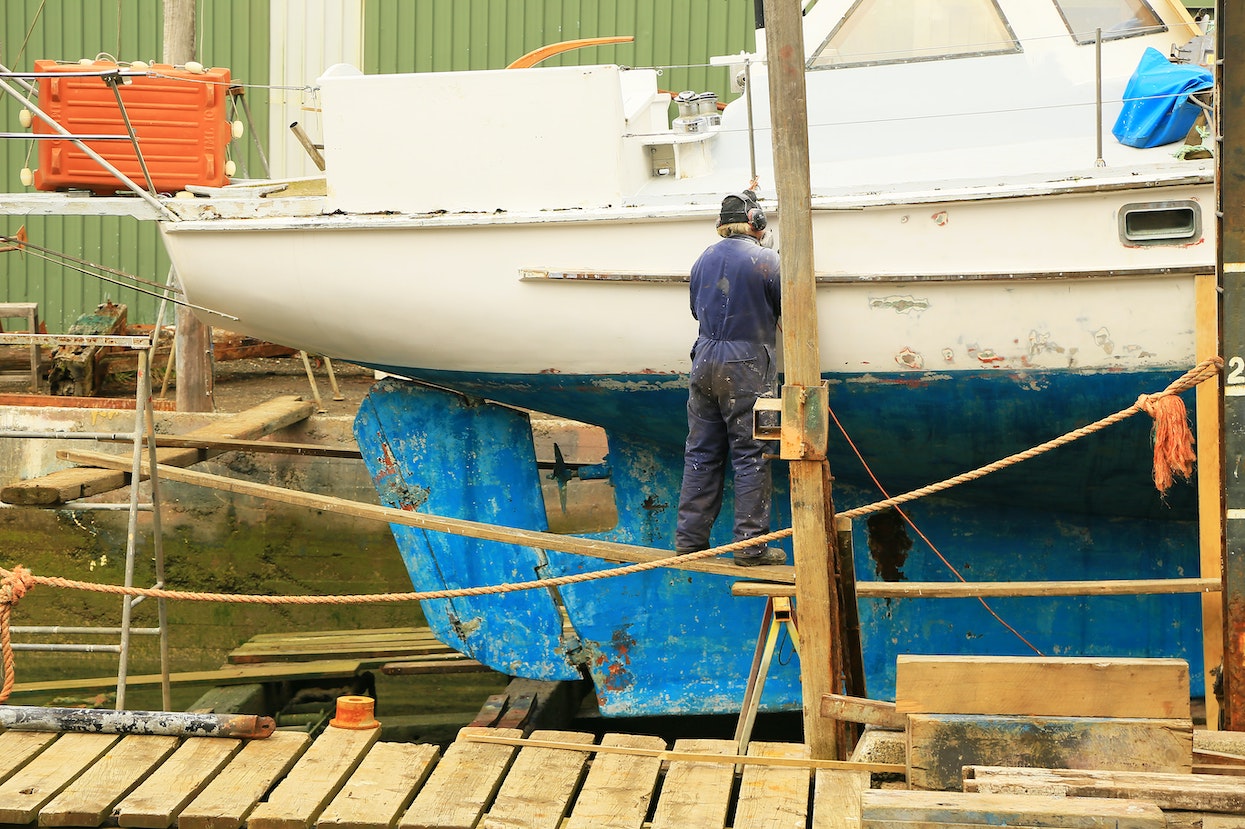
Wintering and Dry Dock
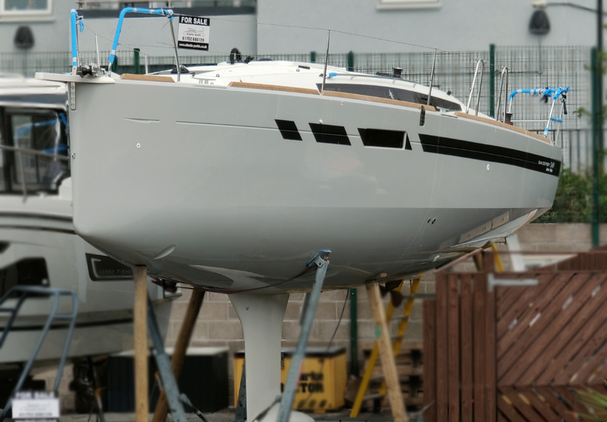
Paying a Fixed Monthly Fee
Related articles.
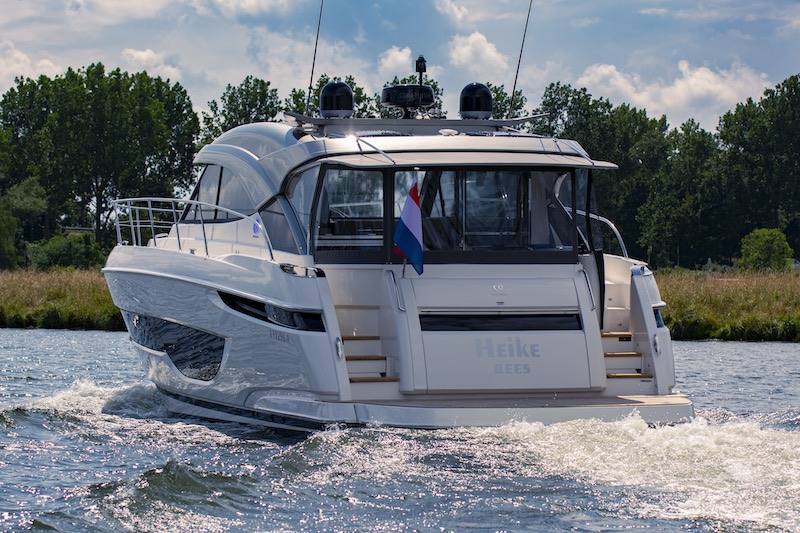
Riviera 4600 Sport Yacht Platinum: a mini superyacht
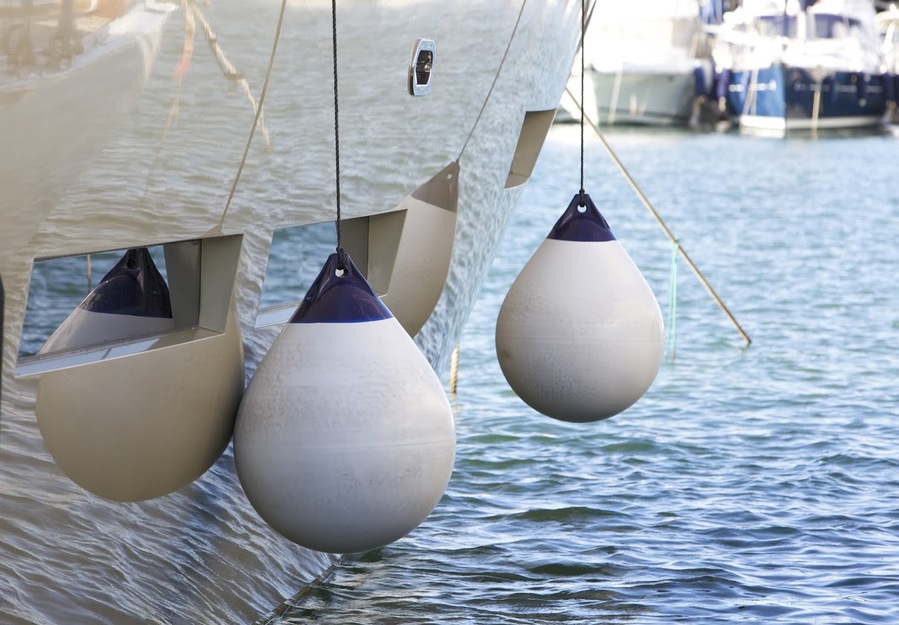
How to Maintain Your Boat
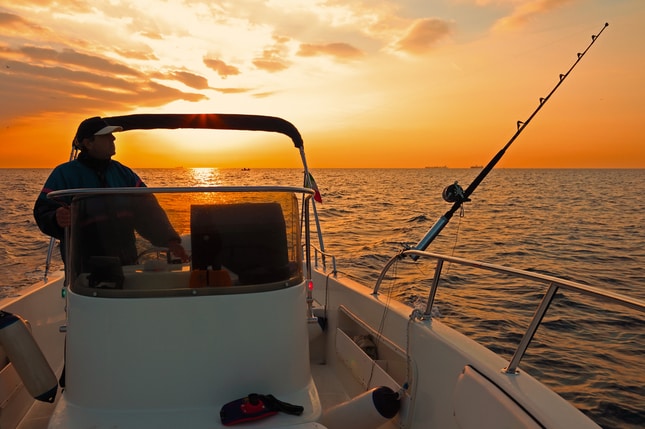
The 8 Best Upgrades for your Fishing Boat

Understanding the Costs of Owning a Sailboat: A Complete Guide
Alex Morgan
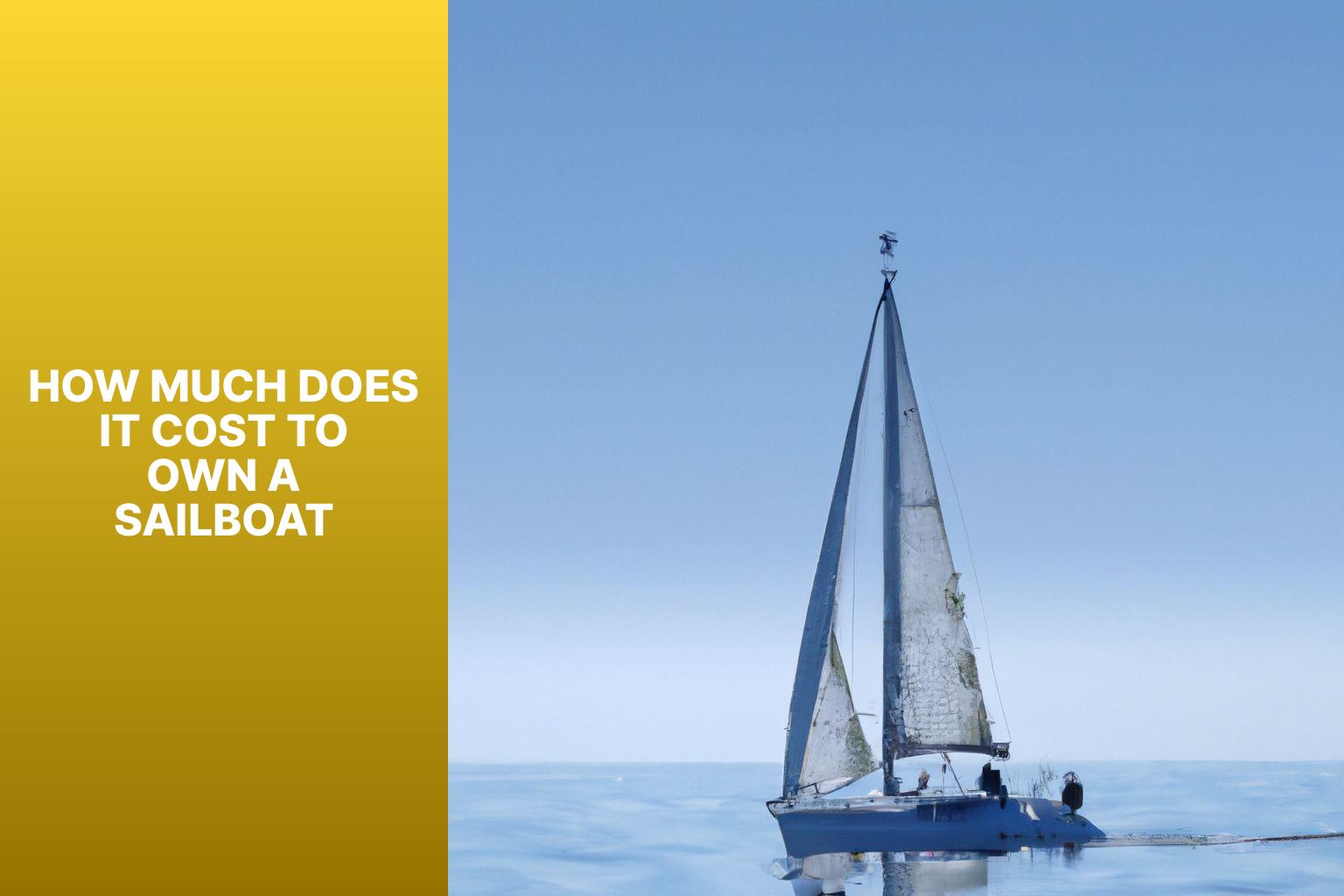
Owning a sailboat can be a dream come true for many sailing enthusiasts. It’s important to understand that there are various costs associated with owning and maintaining a sailboat. By gaining insights from reputable sources such as BoatUS, we can explore the different factors that affect the cost of owning a sailboat and provide helpful tips for managing these expenses.
Factors that impact the cost of owning a sailboat include the type and size of the sailboat, age and condition, location and storage costs, maintenance and repair expenses, insurance and registration fees, as well as any upgrades and customizations. These factors can significantly vary and contribute to the overall expenses involved.
Initially, when purchasing a sailboat, you need to consider the purchase price itself, survey and inspection costs, tax and title fees, as well as any delivery or transportation costs. Additional expenses may arise from the need to purchase equipment and accessories specific to sailing.
ongoing costs are an important consideration. These include mooring or slip fees, insurance premiums, winterization and storage costs, maintenance and repair expenses, as well as fuel, water, and propane costs. In addition, annual registration and licensing renewal fees must also be factored into the budget.
To help manage the cost of owning a sailboat, it is recommended to research and purchase wisely, creating a budget and maintenance plan, considering shared ownership or boat clubs, as well as taking on your own maintenance and repairs. identifying cost-saving opportunities can help make owning a sailboat more financially feasible.
By understanding the factors influencing the cost of owning a sailboat and implementing effective strategies for managing expenses, sailing enthusiasts can enjoy the pleasure of owning a sailboat while being mindful of their financial commitments.
Key takeaway:
- Owning a sailboat can be costly: The cost of owning a sailboat is influenced by various factors, including the type and size of the boat, its age and condition, as well as location and storage costs. It is important to consider these factors when budgeting for a sailboat.
- Initial costs of owning a sailboat: When purchasing a sailboat, one must account for the purchase price, survey and inspection costs, tax and title fees, delivery or transportation costs, as well as equipment and accessories expenses.
- Ongoing costs of owning a sailboat: Owning a sailboat comes with ongoing expenses such as mooring or slip fees, insurance premiums, winterization and storage costs, maintenance and repair expenses, as well as fuel, water, and propane costs. These costs should be factored into the overall budget.
Factors Affecting the Cost of Owning a Sailboat
Owning a sailboat is more than just a hobby—it’s a thrilling adventure that comes with its own set of costs. In this section, we’ll explore the various factors that influence the expenses of owning a sailboat. From the type and size of the vessel to the age and condition, we’ll uncover how these factors play a role in determining the overall cost. We’ll dive into the expenses associated with storage, maintenance, repairs, insurance, registration, as well as upgrades and customizations. So, hold onto your hats as we navigate the financial currents of owning a sailboat!
Type and Size of Sailboat
Pro-tip: Consider your intended use and budget when choosing the type and size of sailboat. Assess your sailing skills and needs to find the right balance between cost and functionality. Research thoroughly and consult with experienced sailors to make an informed decision.
Age and Condition of the Sailboat
The age and condition of a sailboat are crucial factors to consider when evaluating its cost and value. When assessing a sailboat, it is important to take into account various aspects such as the age , maintenance , structural integrity , equipment and systems , upgrades and renovations , as well as the potential resale value .
Older sailboats often have more wear and tear, which may result in frequent repairs. Age alone should not be the sole factor in determining the value of a sailboat. A well-maintained boat, regardless of its age, can be in better condition than a neglected newer boat. It is essential to thoroughly inspect the hull , deck , rigging , and sails for any signs of damage or weakness, as structural issues can be costly to repair. Older sailboats may also have outdated or malfunctioning equipment and systems, which might require upgrading or repair , leading to additional expenses.
On the other hand, considering any enhancements or renovations made to the sailboat can increase its value and overall enjoyment. An older sailboat in good condition may have a higher resale value than a newer boat in poor condition. Therefore, it is vital to assess the potential resale value if considering selling the sailboat in the future.
In a true story, a seasoned sailor once purchased a 30-year-old sailboat in excellent condition. Despite its age, the boat had been meticulously maintained , providing years of reliable cruising without significant expenses. This highlights the importance of not only focusing on the age but also the condition and care given to the sailboat.
Location and Storage Costs
When it comes to owning a sailboat, one cannot underestimate the importance of location and storage costs . These two factors play a significant role in determining the overall expenses.
One key consideration is the mooring or slip fees associated with marinas or yacht clubs. These fees are charged for docking the boat and can vary greatly depending on the location and amenities provided. Whether you are looking to spend a few hundred or several thousand dollars per year, it is crucial to factor in these costs.
Another vital aspect to consider is winterization and storage expenses . Particularly in areas with harsh winters, it becomes necessary to store the sailboat during the off-season. Winterization involves preparing the boat for cold weather conditions and safeguarding it against potential damage. The storage costs can include fees for dry storage or renting boatyard space .
It is essential to take maintenance and repair expenses into account. Depending on the chosen storage location, there may be onsite facilities and services available for routine maintenance and repairs. Proper research and comparison of storage options are crucial to finding a solution that not only meets your needs but also proves to be cost-effective. Key factors to consider in this assessment include proximity to water, security measures, and convenience. These factors will ultimately determine the location and storage costs associated with owning a sailboat.
Maintenance and Repair Expenses
Maintenance and repair expenses are crucial for owning a sailboat. Ensuring that you budget for these costs is necessary to maintain the good condition of your sailboat and guarantee its longevity.
To gain a better understanding of the maintenance and repair expenses, here is a breakdown of the common costs associated with sailboat ownership:
- Regular Maintenance: This includes activities such as cleaning, polishing, and basic upkeep.
- Haul-out and Bottom Painting: Periodically hauling out the boat to apply anti-fouling paint to the hull.
- Rigging: This involves inspecting, tuning, and replacing standing and running rigging.
- Hull Repair: It covers fixing any damage to the hull caused by collisions or accidents.
- Engine Servicing: Maintaining and repairing the boat’s engine and its associated systems.
- Sail Repair: This entails fixing tears, replacing worn-out sails, or upgrading for improved performance.
These maintenance and repair expenses are typical for sailboat owners. Costs can vary depending on factors such as boat size, the extent of the repair required, and whether you choose to do the work yourself or hire professionals.
Regular maintenance and timely repairs can prevent more costly issues in the future. By actively maintaining your sailboat, you can ensure it remains in optimal condition for many years of sailing enjoyment.
It is important to always consider maintenance and repair expenses when calculating the overall cost of owning a sailboat. By being prepared and budgeting for these costs, you can avoid any financial surprises.
Sailboats have been adored by sailors for countless centuries. The joy of sailing remains unchanged from ancient times to the present day. Alongside sailing, sailboat ownership entails taking responsibility for the necessary maintenance and repair expenses. Sailors understand the significance of keeping their vessels in good condition, as it ensures safety and prolongs the lifespan of their sailboats. By dedicating time and resources to maintain and repair their sailboats, sailors have embarked on countless adventures, participated in races, and experienced the serene beauty of gliding through the water. The tradition of caring for sailboats has been passed down through generations, preserving the spirit of sailing.
Insurance and Registration Fees
When owning a sailboat, it is important to consider insurance and registration fees . These two factors play a crucial role in protecting your investment and ensuring legal registration. Here are some key points to keep in mind:
– Insurance : Sailboat insurance is essential in safeguarding against accidents, damage, or theft. The cost of insurance can vary based on several factors, including the value of the boat, its age and condition, your boating experience, and claims history.
– Registration fees : Registering your sailboat is necessary to meet legal requirements. The fees associated with registration can vary depending on the length of the boat, its usage location, and whether it is intended for recreational or commercial purposes.
Both insurance and registration fees should be considered as ongoing costs when budgeting for your sailboat. The specific amounts will vary depending on your individual circumstances and location.
For reference, BoatUS reports that the average annual boat insurance premium typically ranges from 1.5% to 2% of the boat’s market value. In terms of registration fees, they can range from $20 to $200, with the actual amount dependent on the state and size of the boat.
Upgrades and Customizations
When it comes to owning a sailboat, there are various upgrades and customizations that can enhance your sailing experience. Performance upgrades, comfort upgrades, technology upgrades, safety upgrades, and aesthetics upgrades are all available options. Consider your needs, preferences, and budget when deciding on upgrades and customizations for your sailboat. Prioritize upgrades that align with your sailing goals and enhance your sailing experience.
Initial Costs of Owning a Sailboat
Owning a sailboat may be a dream come true, but it’s important to understand the initial costs involved. In this section, we’ll dive into the different factors that contribute to the price tag of owning a sailboat. From the purchase price of the boat itself to survey and inspection costs, tax and title fees, delivery or transportation costs, and necessary equipment and accessories, we’ll break down the expenses you can expect when setting sail into the world of boat ownership. So, let’s hoist the anchor and navigate the financial waters of owning a sailboat!
Purchase Price of the Sailboat
The purchase price of a sailboat is an important factor to consider when owning one. It can vary depending on the size, age, and condition of the boat. Here is a table summarizing the average prices for different types of sailboats:
It’s crucial to note that these prices are estimates and can vary depending on the brand, model, and condition of the sailboat. In addition, other costs such as taxes, registration fees, and survey and inspection expenses should also be taken into consideration.
When purchasing a sailboat, it’s important to thoroughly research and inspect it. Consulting with experts or hiring a professional surveyor to assess its condition is highly recommended .
Buying a sailboat can be a significant investment, but it can also be a rewarding and enjoyable experience. It’s advisable to set a budget and carefully consider all associated costs, including ongoing expenses, to ensure financial preparedness .
If necessary, negotiate the purchase price and consider buying used sailboats as a more affordable option. Wishing you happy sailing !
Survey and Inspection Costs
To determine the cost of owning a sailboat, survey and inspection costs are crucial. They ensure the condition and seaworthiness of the sailboat before buying it.
– Haul-out and bottom inspection: $300 – $500 – General condition survey: $10 – $20 per linear foot of boat length – Out-of-water inspection (including mast and rigging): $300 – $600 – Sail inspection: $150 – $300 – Engine inspection: $200 – $400
These costs can vary depending on the sailboat’s size, complexity, location, and the expertise of the surveyor. It is important to hire a knowledgeable professional surveyor who can thoroughly assess the vessel.
Survey and inspection costs are essential to uncover any potential issues or hidden problems with the sailboat. They allow buyers to make informed decisions and negotiate the purchase price based on the findings. These costs contribute to the overall expenses of owning a sailboat and ensure the vessel’s safety and seaworthiness.
Tax and Title Fees
Owning a sailboat involves considering various costs, including tax and title fees . These fees are necessary for legal ownership of the sailboat and may vary based on the boat’s location and size .
Location | Tax and
——— | —————–
Florida | $500
California | $1,000
New York | $800
These fees are typically a percentage of the sailboat’s purchase price and are required to register the boat and obtain the necessary documentation. It’s important to include these fees when budgeting for the overall cost of owning a sailboat.
To manage the cost of tax and title fees , it’s recommended to research the fees specific to your location beforehand and create a budget that includes these fees. Considering shared ownership or joining boat clubs can help reduce the financial burden of owning a sailboat. Purchasing a used sailboat or performing your own maintenance and repairs can save money in the long run.
Delivery or Transportation Costs
To understand sailboat ownership costs, consider delivery or transportation expenses. Factors like distance, transportation mode, and additional services can affect these costs.
Distance is a key factor in delivery costs. Shipping a sailboat long distances, especially across borders or overseas, significantly increases expenses. The sailboat’s size and weight determine the transportation method (land, sea, or air).
Other contributors to delivery costs include the need for specialized equipment (e.g. cranes, trailers) to load and unload the sailboat. Remote or hard-to-reach locations require extra logistics and fees.
To minimize costs, research reputable transportation providers with competitive prices. Comparing quotes helps find the most cost-effective option. Coordinating the delivery during low-demand periods also reduces expenses.
Pro-tip: Prioritize safety and proper handling during transportation. Investing in reliable services prevents damages or delays, ensuring a smooth journey for your new vessel.
Equipment and Accessories
When owning a sailboat, it is important to factor in the cost of equipment and accessories. These items are vital for the proper functioning and enjoyment of your sailboat.
The cost of equipment and accessories can vary depending on the size and type of sailboat, as well as personal preferences and requirements. Investing in high-quality and durable equipment is crucial.
It is worth considering ongoing maintenance and replacement costs for certain equipment and accessories. For instance, sails may need replacement every 5-10 years, depending on usage and care. Electronics may also require upgrades as they become outdated.
By meticulously considering necessary equipment and accessories and budgeting for their costs, you can ensure a safe and enjoyable sailing experience.
Ongoing Costs of Owning a Sailboat
Owning a sailboat can bring both joy and ongoing costs. In this section, we’ll explore the various expenses that come with owning a sailboat. From mooring or slip fees to maintenance and repair expenses, we’ll uncover the financial considerations that sailors need to keep in mind. Additionally, we’ll touch upon insurance premiums, winterization and storage costs, as well as fuel, water, and propane costs. Lastly, we’ll discuss the need for registration and licensing renewal fees. Buckle up as we dive into the financial realities of sailboat ownership!
Mooring or Slip Fees
When owning a sailboat, one of the ongoing costs is mooring or slip fees. These fees secure a location to dock or store your sailboat. Here are some important details to keep in mind:
Location: Mooring or slip fees can vary depending on the location. Popular coastal areas or marinas in metropolitan cities tend to have higher fees than remote or less populated areas.
Size of boat: The size of your sailboat affects the cost of mooring or slip fees. Larger boats require more space and may have higher fees.
Type of mooring: Marinas offer different mooring options, such as floating docks, mooring balls, or fixed piers. The type of mooring chosen may impact the fees.
Length of stay: Mooring or slip fees are typically charged monthly or yearly. Longer-term contracts often have discounts or lower rates compared to short-term or transient mooring.
Amenities and services: Some marinas offer additional amenities and services, such as electricity, water hookups, Wi-Fi access, security measures, and facilities. These extras may contribute to higher fees.
Research and compare different marinas or docking facilities in your desired area to find the most suitable and cost-effective option for mooring or slip fees.
Insurance Premiums
Insurance premiums are an important ongoing cost to consider when owning a sailboat. Here are some key factors:
- Boat’s value: Premiums are often based on the sailboat’s value. Higher-value boats may have higher insurance premiums.
- Type of coverage: Different insurance policies offer varying levels of coverage, which directly affects the premium amount.
- Boating experience: The owner’s sailing experience and history may be taken into consideration. More experienced sailors may be eligible for lower insurance premiums.
- Location: Insurance premiums can be impacted by the location where the sailboat will be primarily used and stored. Areas prone to natural disasters or high rates of boat theft may have higher insurance premiums.
- Previous claims history: Insurance companies consider the claims history of the sailboat owner. Owners with a record of previous claims may be charged higher insurance premiums.
- Security measures: Installing security devices such as GPS tracking, alarms, or sturdy locks can help reduce insurance premiums. Storing the sailboat in a secure location can also have an impact.
- Insurance provider: Rates and coverage options vary among insurance companies. It’s important to shop around and compare quotes to find the best insurance coverage at an affordable premium.
Considering these factors can help you make an informed decision about insurance premiums for your sailboat.
Winterization and Storage Costs
When owning a sailboat, it’s crucial to carefully consider the expenses associated with winterization and storage costs . These costs are necessary to safeguard your sailboat during the colder months.
Winterization , which can amount to approximately 1% to 3% of your boat’s value, involves various tasks such as removing and securely storing sails, electronics, and disconnecting the battery. In addition to these tasks, there are supplementary costs involved, such as purchasing antifreeze, fuel stabilizer, and other materials essential for the winterization process.
On the other hand, storage costs are determined by factors such as the size of your boat and its location. If you opt for indoor storage, you can expect to pay a monthly fee ranging from $300 to $900. Outdoor storage options, on the other hand, are more affordable, with costs typically falling between $100 and $400 per month.
In order to efficiently manage these expenses, it is crucial to plan ahead and establish a budget. A sensible approach would be to contact local marinas or boatyards and compare prices to find the most suitable storage option for your sailboat. You should inquire about any available long-term storage discounts or package deals that can help you protect your sailboat without exceeding your budget.
Maintenance and repair expenses are significant for sailboat ownership. Consider the following factors for these costs:
-Regular maintenance: Sailboats require routine upkeep for proper functioning. This includes cleaning, painting, and lubricating various components.
– Engine maintenance: Sailboats with engines need regular servicing, including oil changes, filter replacements, and inspections. Costs vary based on engine size and type.
-Sail and rigging repairs: Over time, sails and rigging may wear out or become damaged. Repairing or replacing these components is necessary for sailboat performance and safety.
-Hull repairs: The sailboat hull may need occasional repairs due to impacts, corrosion, or wear and tear. Costs vary based on damage extent and repair materials.
– Electronics and electrical system maintenance: Sailboats with electronics and electrical systems require periodic inspections, repairs, or replacements for proper functioning.
To manage maintenance and repair expenses effectively, consider these suggestions:
-Create a budget: Allocate funds specifically for maintenance and repair costs.
-Perform regular inspections: Assess the sailboat’s condition regularly to detect potential issues early and address them promptly.
-Learn basic maintenance skills: Develop DIY skills to handle minor repairs and maintenance tasks, reducing the need for professional assistance.
-Stay proactive: Address maintenance and repair needs promptly to prevent further damage and potential cost increases.
-Consider professional assistance: Some complex repairs or specialized tasks may require professional expertise. Factor in the cost of hiring professionals when budgeting for maintenance and repairs.
Fuel, Water, and Propane Costs
Fuel, water, and propane costs are important ongoing expenses to consider when owning a sailboat. These costs can vary depending on factors such as frequency of use, distance traveled, and the boat size. Here are some key points to keep in mind:
– Sailboats require fuel for auxiliary engines during maneuvers or emergencies. On average, fuel costs can range from 5-10% of total operating expenses and propane costs.
– Sailboats have water tanks for drinking, cooking, and cleaning. Refilling these tanks depends on location and water prices. Marinas offer refill stations, charging per gallon or per liter usage.
– Sailboats use propane for cooking, heating, and refrigeration. Propane costs vary based on tank size and frequency of usage. Consider refill costs and ensure a sufficient supply.
Fact: BoatUS Magazine reports that the average sailboat owner spends $1,000 to $2,000 per year on fuel, water, and propane costs.
Registration and Licensing Renewal Fees
Owning a sailboat requires considering the registration and licensing renewal fees. These mandatory fees vary depending on the boat’s registration location. They contribute to maintaining boating facilities and waterways.
Factoring in these fees is essential when considering the overall cost of owning a sailboat. Failure to renew registration and licensing can result in fines or the boat’s inability to be operated legally. It is crucial to check the specific renewal requirements and deadlines in your area.
Tips for Managing the Cost of Owning a Sailboat
Owning a sailboat can be a dream come true, but managing the costs can be a challenge. In this section, we’ll share some valuable tips to help you navigate the financial waters of owning a sailboat. From researching and purchasing wisely to creating a budget and maintenance plan, we’ll equip you with practical strategies to keep expenses in check. We’ll also explore alternative options like shared ownership and cost-saving opportunities, so you can indulge in your sailing passion without breaking the bank .
Research and Purchase Wisely
When owning a sailboat, research and purchase wisely for the best possible decision. Here are some tips to help with research and purchase:
1. Determine sailing goals: Consider racing or cruising, day-sailing or extended trips. Knowing goals narrows down options.
2. Research sailboat types: Each type has advantages and disadvantages. Research size, stability, and handling.
3. Read reviews and seek recommendations: Look for reviews of sailboat models and brands. Read about other sailors’ experiences and seek expert or fellow sailor recommendations.
4. Inspect sailboat: Thoroughly inspect any potential sailboat. Look for damage, assess condition, and check for necessary repairs or upgrades.
5. Consider maintenance cost: Account for ongoing maintenance when deciding to purchase.
6. Get a survey: Have a professional surveyor evaluate the sailboat’s condition and identify any potential issues.
Pro-tip: Take your time, do thorough research, and consult experts for an informed decision.
<table> tags intact, if found.
Create a Budget and Maintenance Plan
To successfully create a budget and maintenance plan for owning a sailboat, it is crucial to follow these steps:
1. Assess your financial situation and establish your boat ownership budget.
2. Research and compile a list of potential expenses related to sailboat ownership, including the purchase price, insurance premiums, mooring fees, maintenance costs, and fuel expenses.
3. Categorize and estimate the average cost for each expense category, such as monthly insurance cost, annual maintenance cost, and seasonal winterization and storage cost.
4. Prioritize and allocate your budget appropriately, identifying areas where you can save money and areas where you should invest more.
5. Develop a maintenance timeline and schedule regular check-ups to proactively address small issues before they escalate into costly repairs.
6. Maintain a comprehensive record of all expenses and periodically compare them with your budget to ensure you are staying on track.
7. Establish a contingency fund specifically designated for unexpected repairs or emergencies that may arise.
8. Stay informed about potential cost-saving opportunities, such as discounts on mooring fees or fuel, and take full advantage of them.
9. Regularly review and adjust your budget and maintenance plan to accommodate any changes in your financial situation or boat ownership requirements.
By implementing these steps, you will be able to effectively manage your sailboat’s finances and upkeep, enabling you to fully enjoy your sailing experiences.
Consider Shared Ownership or Boat Clubs
Consider shared ownership or boat clubs as a cost-saving option when owning a sailboat.
– Shared Ownership: When considering the ownership of a sailboat, it would be wise to consider shared ownership programs or boat clubs. These options allow you to share the costs and responsibilities with others, resulting in significantly reduced expenses. By joining a shared ownership program, you can split the purchase price, maintenance costs, mooring fees, and other expenses among multiple owners. This arrangement offers shared usage, ensuring that you can enjoy the sailboat without shouldering the full financial burden.
– Boat Clubs: Another cost-effective alternative to purchasing and maintaining a sailboat individually is to join a boat club. Boat clubs grant you access to a fleet of sailboats for a monthly or annual fee. This eliminates the need for individual ownership and the associated expenses. Boat clubs offer various membership levels and allow members to reserve boats for specific dates and durations, providing flexibility and convenience. This is particularly advantageous for individuals who desire the joys of sailing without long-term commitments and heavy financial obligations.
– Membership Fees: Before finalizing your decision, it is essential to consider the membership fees associated with shared ownership or boat clubs. Take the time to compare these fees with the potential cost savings to ensure they align with your budget and sailing needs.
– Availability and Reservations: It is crucial to check the availability of sailboats and the ease of reserving them in your area. Consider the proximity of boat club locations to ensure convenient access.
– Community and Networking: Beyond the financial advantages, shared ownership and boat clubs offer an opportunity to connect with fellow sailing enthusiasts and foster a sense of community. By sharing experiences, knowledge, and resources with other members, you can enhance your overall sailing experience.
Considering shared ownership or boat clubs is a practical way to enjoy the benefits of sailing while minimizing financial obligations.
Do Your Own Maintenance and Repairs
Doing your own sailboat maintenance and repairs saves money and ensures good condition. By taking the necessary steps, you can effectively Do Your Own Maintenance and Repairs.
1. Regularly inspect your boat for damage or wear. Check the hull for cracks, inspect rigging for fraying or corrosion, and examine sails for tears or holes.
2. Learn basic maintenance tasks like cleaning, changing oil and filters, and checking and replacing spark plugs. This way, you can confidently Do Your Own Maintenance and Repairs.
3. Invest in a versatile set of tools including wrenches, pliers, screwdrivers, and electrical testers. These tools will aid you in successfully completing Do Your Own Maintenance and Repairs.
4. Educate yourself on more complex repairs like fixing leaks, repairing electrical systems, and replacing parts. By learning these skills, you will be equipped to effectively Do Your Own Maintenance and Repairs.
5. Be proactive in addressing issues to prevent them from becoming costly problems later. By taking proactive measures, you can efficiently Do Your Own Maintenance and Repairs, saving both time and money.
By doing your own maintenance and repairs, you save money and develop a better understanding of your boat, boosting your confidence in handling any issues that may arise. So, take charge and confidently Do Your Own Maintenance and Repairs.
Take Advantage of Cost-Saving Opportunities
To efficiently manage the expenses associated with owning a sailboat, it is crucial to capitalize on various cost-saving opportunities. These approaches include:
- Making use of discounts and promotions provided by marinas and boat clubs. These organizations frequently offer reduced rates for services such as mooring or slip fees, as well as other facilities.
- Engaging in co-ownership of a sailboat with other individuals or families to distribute the costs and enhance affordability.
- Whenever feasible, handle your own maintenance and repairs. Acquiring basic boat maintenance skills can substantially reduce expenses related to labor costs.
- Prior to purchasing equipment, accessories, and supplies for your sailboat, conduct thorough research and compare prices. Look out for sales, discounts, and consider buying used items in good condition to cut down on expenses.
- Seek out opportunities to save on fuel, water, and propane. Look for marinas or fuel stations that provide boaters with discounts or loyalty programs.
By implementing these strategies, one can effectively reduce the overall cost of sailboat ownership and ensure a more affordable boating experience.
Some Facts About How Much Does It Cost To Own A Sailboat:
- ✅ The initial purchase cost of a sailboat can vary depending on factors such as type, size, condition, and whether it’s new or used.
- ✅ Financing options are available for those who can’t afford to buy a sailboat outright.
- ✅ Maintenance costs for a boat can be around 10% of its value per year, and unexpected repairs may also be necessary.
- ✅ Owning a sailboat can be affordable, with prices ranging from $1,500 for a used sailboat to $250,000 for a new sailboat.
- ✅ The average price of new sailboats is $250,000, ranging from $96,000 to $654,000.
Frequently Asked Questions
1. how much does it cost to buy a sailboat.
The cost of buying a sailboat can vary depending on factors such as type, size, condition, and whether it’s new or used. For example, a new sailboat can cost anywhere from $96,000 to $654,000, while a used sailboat can range from $19,000 to $518,000. Popular sailboats such as the Catalina 30, Islander 36, Contessa 32, Pearson 34, and Nordic 40 have different asking prices.
2. What are the annual components of owning and operating a sailboat?
The annual costs of owning and operating a sailboat include maintenance costs (around 10% of the boat’s value per year), insurance costs (approximately 1.5% of the boat’s value), mooring or berthing costs (varying based on location and convenience), off-season storage ashore fees (cheaper than marina berths), and additional expenses for upgrades and repairs.
3. What is the true cost of boat ownership?
The true cost of boat ownership goes beyond the initial purchase price. It includes various other expenses such as the price of the boat and additional equipment needed for sailing (capital cost), finance costs (if a loan is taken), depreciation (which may not be significant for well-maintained used boats over 5 years old), insurance costs, mooring or berthing fees, off-season storage ashore charges, and ongoing maintenance and upgrade costs.
4. How much are the hidden costs of owning a sailboat?
Owning a sailboat involves additional costs that might not be immediately apparent. These hidden costs include inspection fees, necessary add-ons for safety, potential repairs, and unforeseen expenses that may arise during ownership. It is important to factor in these hidden charges when budgeting for a sailboat.
5. What are the monthly expenses associated with sailboat ownership?
Monthly expenses for owning a sailboat may include maintenance costs (ranging from $2,000 to $3,000), mooring or docking fees, insurance premiums, fuel costs, electricity bills, dining out expenses, internet access fees, personal care and clothing expenses, and entertainment costs. These expenses can vary depending on individual preferences and lifestyle choices.
6. How can I make money from owning a sailboat?
While owning a sailboat does come with expenses, there are potential ways to offset costs or even make money. Some sailboat owners choose to rent out their boats when not in use, participate in boat chartering programs, or offer sailing lessons. It is important to research and understand the legal and financial implications of such endeavors.
About the author
Leave a Reply Cancel reply
Your email address will not be published. Required fields are marked *
Save my name, email, and website in this browser for the next time I comment.
Latest posts

The history of sailing – from ancient times to modern adventures
History of Sailing Sailing is a time-honored tradition that has evolved over millennia, from its humble beginnings as a means of transportation to a beloved modern-day recreational activity. The history of sailing is a fascinating journey that spans cultures and centuries, rich in innovation and adventure. In this article, we’ll explore the remarkable evolution of…

Sailing Solo: Adventures and Challenges of Single-Handed Sailing
Solo Sailing Sailing has always been a pursuit of freedom, adventure, and self-discovery. While sailing with a crew is a fantastic experience, there’s a unique allure to sailing solo – just you, the wind, and the open sea. Single-handed sailing, as it’s often called, is a journey of self-reliance, resilience, and the ultimate test of…

Sustainable Sailing: Eco-Friendly Practices on the boat
Eco Friendly Sailing Sailing is an exhilarating and timeless way to explore the beauty of the open water, but it’s important to remember that our oceans and environment need our protection. Sustainable sailing, which involves eco-friendly practices and mindful decision-making, allows sailors to enjoy their adventures while minimizing their impact on the environment. In this…
Towergate together with our parent company The Ardonagh Group are deeply saddened to hear of the death of Her Majesty the Queen. She is remembered by our colleagues and worldwide as a beacon of duty, wisdom and service.

- Personal Insurance
- Business Insurance
- Commercial Drone
- Film and TV Production
- Photography and Camera Equipment
- Photography
- Videographer
- See All Camera Covers
- Care and Medical
- Dental Indemnity
- Dental Nurse
- Domiciliary Care
- Medical Indemnity
- Staff Absence
- See All Care and Medical Covers
- Commercial Property
- Block of Flats
- Business Premises
- Caravan Park and Campsite
- Commercial Property Owners
- See All Commercial Property Covers
- Commercial Vehicle
- Agricultural Vehicle
- Driving Instructor
- Self-Drive Hire
- See All Commercial Vehicle Covers
- DSS Landlord
- HMO Landlord
- Landlord Boiler
- Landlord Contents
- Landlord Home Emergency
- Multi Property Landlord
- Short-Term Landlord
- Student Landlord
- Unoccupied Landlord
- See All Landlord Covers
- Small Business
- Cyber Liability
- Directors and Officers
- Employers Liability
- HR and Training Consultants
- Product Liability
- Professional Consultants
- Professional Indemnity
- Public Liability
- Self Employment
- See All Small Business Covers
- Beauty Therapist
- Complementary Therapists
- Counsellors
- Talking Therapists
- Hypnotherapy
- Psychotherapists
- Psychologists
- Massage Therapist
- Nutritional Therapist
- See All Therapists Covers
- Trade Specific
- Contractors All-Risk
- Construction
- Professional Indemnity for Trades
- Sole Traders
- Tree Surgeon
- See More Trade Specific Covers
- Canal and Narrowboat
- Canoe and Kayak
- Paddle Board and Windsurf
- Rowing Scull
- Yacht and Catamaran
- See All Boat Covers
- Holiday Lodge
- Static Caravan
- Touring Caravan
- Trailer Tent
- See All Caravan Covers
- Bloodstock and Racehorse
- Horse Trailer
- Horsebox Breakdown
- Livery Yard and Stables
- Veteran Horse
- See All Equine Covers
- Backpacker Travel
- Car Hire Excess
- Coach Travel
- Long Stay Travel
- Over 65s Travel
- Sports Travel
- Travel With Pre-Existing Medical Conditions
- See All Travel Covers
- Home and Property
- See All Home and Property Covers
- Private Clients
- Holiday Home
- Listed Property
- Non-Standard Construction
- Second Home
- Unoccupied Property
- Lifestyle Excess
- Martial Arts
- See All Leisure Covers
- Gurkha Family Medical Expenses
- Military Adventure Training
- Military Contents
- Military Home
- Military Kit
- Military Personal Accident
- Military Travel
- Military Winter Sports
- See All Military Covers
- Classic Bike
- Classic Car
- Disabled Driver
- Learner Driver
- Non-Standard Private Car
- Van Hire Excess
- See All Motor Covers
Guide to Buying and Owning a Yacht
Spend an afternoon at a busy marina, and it’s clear that yachting is having something of a heyday. Whether you’ve previously sailed with a crew and are looking to next compete in your own vessel, or you are simply attracted to the lifestyle of leisurely weekends along the coast, owning a yacht is a dream for many. But what does owning a yacht involve, and how much will it all set you back? Our guide will help you understand the realities of yacht purchase and ownership.
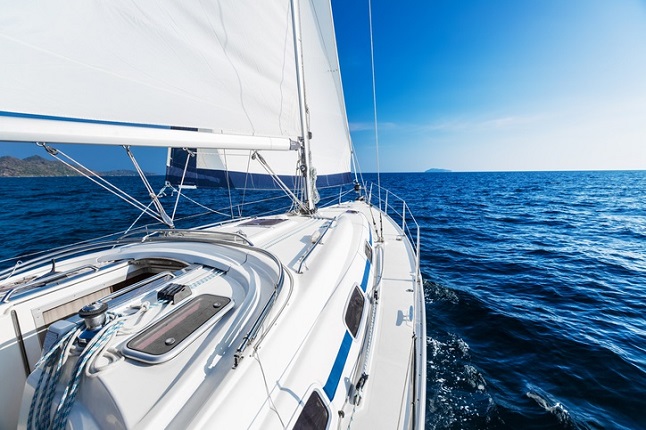
What is a yacht?
Just like cars, yachts come in all shapes and sizes, ranging from about 20ft to over 100ft in length. They tend to be propelled by either sails or a motor, often have living quarters below deck, and are used for both casual cruising and competitive racing.
What is a sailing yacht?
As the name suggests, sailing yachts are any watercraft principally propelled by their sails. Sailing yachts can be categorised by three main characteristics:
Hull shapes:
- Monohull: Single hull
- Catamaran: Two hulls
- Trimaran: Three hulls
Keel types:
- Long : Forms part of the hull structure as opposed to being bolted on
- Fin: Bolted on to the underside of the hull, varying from shallow fin to deep fin
- Bilge: Twin, or bilge keels, keep a yacht upright when dried out at low tide
- Lifting: A lifting keel enables a yacht to stay afloat in very shallow water
- Canting: Canting keels are used on high performance racing yachts
- Trailing Sailers: Small sailing yachts up to 26ft long that can be towed on a trailer
- Sloop: One mast, one mainsail, one headsail
- Cutter: One mast, one mainsail, two headsails
- Ketch: Two masts, one main mast, one mizzen (smaller)
- Yawl: Two masts, one main mast, one mizzen
- Schooner: Two masts, one main mast aft, one smaller master forward
- Gaffer: Features an additional spar that supports the main-sail
What is a motor yacht?
Motor yachts do not tend to have sails and are propelled by various kinds of motors. As they are designed for cruising, they are generally aimed at the leisure market.
What is a superyacht?
Also known as luxury yachts, large yachts or mega yachts, superyachts tend to be especially large (about 80ft and up), expensive and typically have a crew on board.
How much does a yacht cost?
For less than £50,000, you can buy a recently-built 30-35ft yacht, or a 40ft yacht that is a little older. If you have your sights set on an expedition yacht that is bigger still, you won’t get much for less than £1 million.
Yachts vary enormously in price, depending on the boat's size and age. On top of the asking price, new yacht owners will also have to consider the costs of fuel, maintenance and mooring.
Small yacht prices
New sailing yachts typically cost upwards of £10,000. For family outings and casual sailing with friends, a boat length between 25-30ft is plenty, with many models featuring cabin space for sleeping, washing and cooking.
Yachts of this size generally cost between £25,000 and £50,000, while roomier, more performant sailing yachts can upwards of £100,000.

Costs of buying a new yacht
Besides all the typical mooring, fuel and other certifications, new yacht buyers will encounter some potential hidden charges:
- Yacht survey cost: Whether you’re buying privately of through a yacht broker, The Royal Yachting Association (RYA) strongly advises having your boat surveyed before purchasing.
- Add-ons: Does the boat come with essentials like anchors, sails and rigging?
- Depreciation: Like a car, the value of a new yacht sinks quickly after purchase.
Costs of buying a second-hand yacht
While you may not be able to customise the boat exactly as you wish, there are often fewer hidden costs to buying a used yacht. Nonetheless, you’ll want to account for:
- Broker's fee: Keep an eye out for admin charges that can quickly tot up, and choose a brokerage based on positive reviews, if you can find them. You could get a great deal on a bargain fixer-upper, or even an ex-charter yacht that looks and sails as good as new.
- Surveyor's fee: This is especially recommended for boats already accustomed to the high seas.
- Maintenance: Examine the boat carefully for signs of wear and tear, as fixing any damage can be costly.
How much does a superyacht cost?
A 300ft superyacht, with a top speed of 25 Knots and the capacity for 50 crew costs around £200 million, according to research from Towergate Insurance . Fuelling a superyacht can cost upwards of £300,000 a year, with maintenance amounting to around £775,000 a year.
Superyachts vary in price though: Venus, which belongs to the family of Steve Jobs, was bought for $129 million, while Roman Abramovich’s 500ft Eclipse cost a cool $500 million.
What to look for when buying a yacht?
- Check there are no visible distortions in any parts of the hull
- Are the hull surfaces smooth?
- Are the decks sound and firm?
- Check the prop and rudder for any obvious damage
- Are there any signs of oil leaks in the engine compartment?
- Are engine hoses and connections all secure?
- Check for leaks in the interior
- Bad smells in the interior may warn of potential moisture, ventilation or electrical problems
- Are there any signs of corrosion on metal hulls, inside or out?
- Are the electrics corrosion free?
- Are you adequately insured?
- Prepare for sea with a Royal Yachting Association (RYA) training course
Yacht maintenance tips
Regular maintenance will keep your craft safe, minimise the chances of you getting stranded, and help you to get the best price when you come to sell it on.
- Check the engine belts and hoses for damage
- Change the oil filters and engine oil level
- Check the drive shaft is connected and propellers lubricated
- Check the battery connections are tightly fastened
- Ensure there is enough fuel in the tank and you have reserves
- Make sure all instrumentation is sound
- Bring along your GPS, compass and paper charts
- Ensure safety equipment is on board and up to scratch, including a life jacket for all passengers, flare, binoculars, torch and spare batteries, fire extinguisher, first aid kit, life raft, life rings
Yacht security
While most marinas are secure, you still want to know your investment is safe when you leave it out of sight for periods at a time. Some simple security steps can give you peace of mind.
- Complete an inventory of everything held on board your yacht, including fuel and equipment
- Explore ways of preventing breaking and entry – are hatches and windows within easy reach? Are your locks fit for purpose?
- Remove expensive gear when leaving the boat for extended periods
- Invest in an alarm
- In case the worst happens, make sure your boat is insured
Sailing into the sunset
Buying your first yacht is one of the most exciting investments you can make, be it for sport, leisure – or a mix of the two. Ensuring you get the best deal for your yacht, and then giving it a long life through regular maintenance will, therefore, pay dividends for years to come.
At Towergate, we provide yacht owners with protection so they can feel confident their investment is safe and sound. Contact us today to learn more.
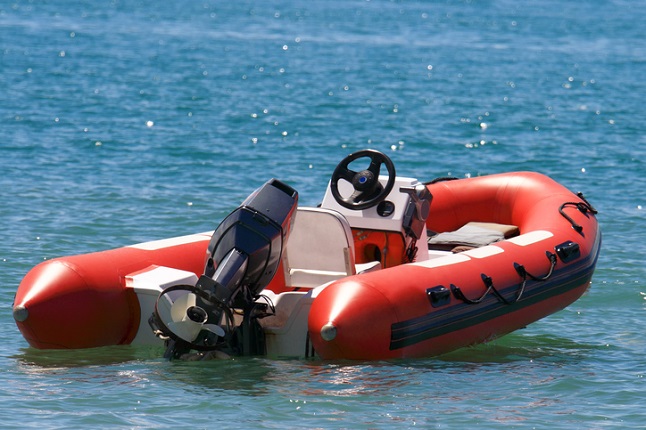
About the author
Adam Summersby is a respected leader with 11 years’ varied experience in niche personal and commercial lines insurance, including caravan, site operators and excess reimbursement, with proficiency in leadership, sales and account management.

Date: September 13, 2017
Category: Boat
At a Glance
Related articles, southampton boat show, chartering your boat, anatomy of a powerboat: guide to a powerboat, beginners guide to passing through a lock, the difference between motorboat and rib insurance, sit down vs stand up jet ski insurance, sailing life hacks, essential safety devices for ribs, canoeing water grades explained, guide to sea boat fishing in the uk, protect other things that matter to you.
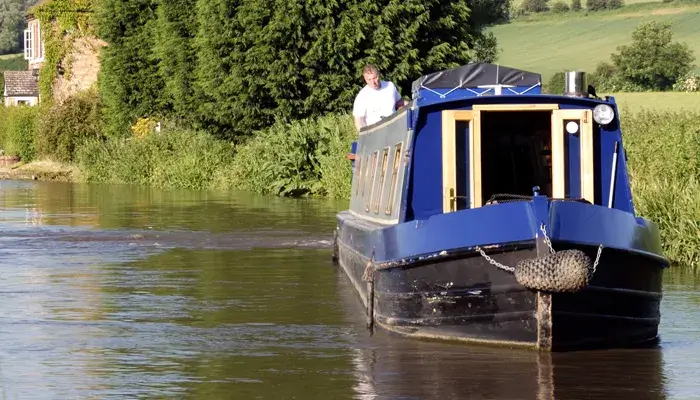
Canal and Narrowboat Insurance

Canoe and Kayak Insurance
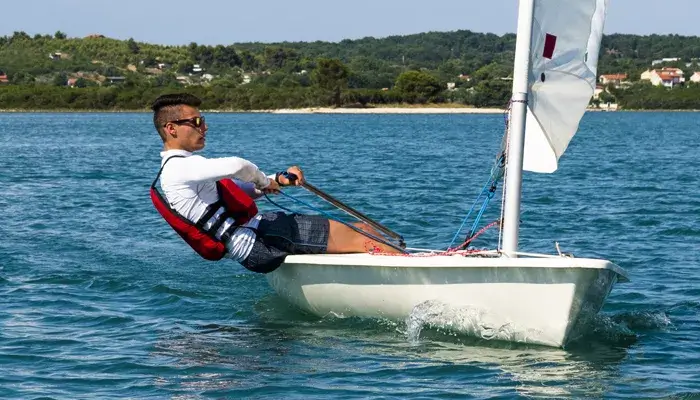
Dinghy Insurance

Jet Ski Insurance
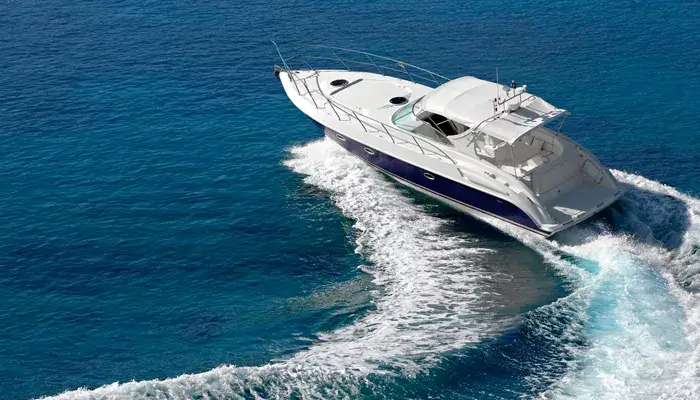
Motor Boat Insurance
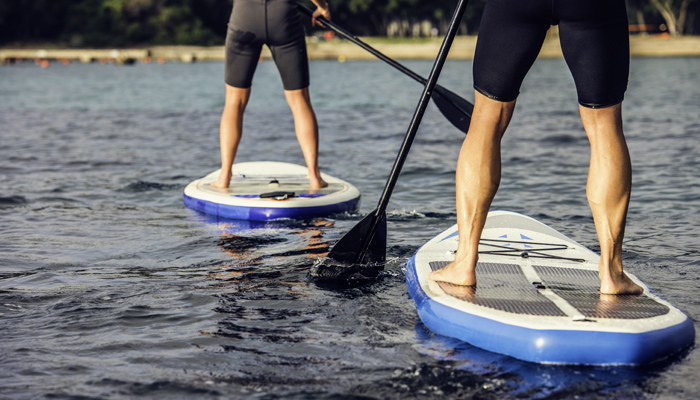
Paddle Board and Windsurf Insurance
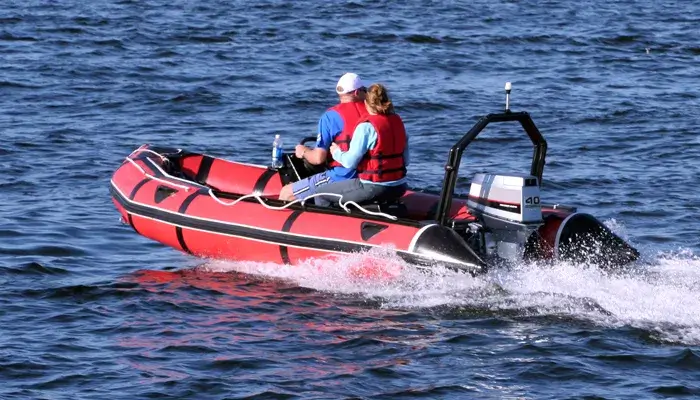
RIB Insurance

Rowing Scull Insurance
Small boat insurance.

Yacht and Catamaran Insurance
Boat Ownership Cost Calculator
Step 1 of 4: boat details, boat length, step 2 of 4: mooring details, where do you plan to keep your boat.
- Rest of Europe
- Rest of World
Which area of the UK?
- South Coast
- Scotland or Ireland
What type of mooring will you require?
- Basic - Swinging mooring
- Standard - Pontoon berth (no electric or water)
- Premium - Fully serviced marina and facilities
Step 3 of 4
What standard will you maintain your boat to.
- Basic - Essentials and DIY
- Standard - Essentials with professional help
- Premium - Professional with no expense spared
Step 4 of 4
How many days a year do you plan to use your boat, your forecast ownership costs are.........
- Purchase Cost Answer Boat purchase cost
- Depreciation under 4 years old (9%) Annual depreciation (boats under 4 years old - 9%)
- Depreciation under 8 years (5%) Annual depreciation (boats under 8 years old - 5%)
- Depreciation over 8 years (2%) Annual depreciation (boats over 8 years old - 2%)
- Capital cost (3%) Annual capital cost (3%)
- Mooring costs basic Annual mooring costs (basic)
- Mooring costs standard Annual mooring costs (standard)
- Mooring costs premium Annual mooring costs (premium)
- Maintenance basic Annual maintenance (basic)
- Maintenance standard Annual maintenance (standard)
- Maintenance premium Annual maintenance (premium)
- We hope you found our cost calculator useful. Please browse the topics below for further information relating to the costs of ownership and the growing number of alternative options to buying a boat.
Back to boat ownership resource library >

Living on a Boat in the UK
Imagine waking up every morning to the gentle sway of the water, sea breeze in your hair and a stunning view of the sunrise. Living on a boat may sound like an adventurous dream come true, but it’s not all sunshine and rainbows. From navigating choppy waters to dealing with limited storage spaces, there are several things you need to consider before taking this unique lifestyle leap. In this blog post, we’ll discuss ten crucial factors that can make or break your living-on-a-boat experience in the UK.
By the way, if you’re going to be docking your yacht or boat at a marina, you’re going to want to make sure that it’s insured. Looking to get a new yacht or boat insurance quote ? Admiral Marine is the company to call +44 (0)1722 416106
#1 Location. Where Can You Live on a Boat in the UK?
If you’re considering living on a boat in the UK, there are a few things you should take into account. First, of course, is location. Where do you want to moor your boat? There are many options available, from marinas to river moorings to canals. Each option has its own advantages and disadvantages, so it’s important to do your research and decide what’s best for you.
Another thing to consider is weather. The UK is known for its unpredictable weather, and that can be a challenge when you’re living on a boat. You need to make sure your boat is well-equipped for all types of weather conditions, and that you have a plan for dealing with bad weather when it hits.
Finally, you need to think about the practicalities of living on a boat. How will you power your boat? What will you do for drinking water? How will you deal with waste? These are all important questions that need to be considered before making the move to life on the water.
#2 The Costs of Living on a Boat
One of the big questions people ask when they are considering living on a boat is ‘how much will it cost me?’ and ‘Is it expensive to live on a boat UK?’. The truth is, there is no easy answer to this question as it all depends on your individual circumstances. However, in this blog post we will attempt to give you an overview of some of the costs you may need to consider if you are thinking about living on a boat in the UK.
The first cost you need to think about is the purchase price of the boat itself. Obviously, the size and type of vessel you choose will have a big impact on how much it costs. You also need to factor in things like mooring fees and insurance. These costs can vary considerably depending on where in the UK you plan to live onboard your boat.
Another key cost to consider is self-sufficiency. If you want to be completely independent, then you will need to generate your own power and water. This can be done through solar panels and rainwater harvesting, but it will obviously come at an additional cost.
Of course, there are other costs associated with living on a boat that you need to consider, such as food and fuel. However, these costs are relatively small when compared to the overall cost of living on land. In fact, many people who live on boats find that they save money in the long run as they no longer have any housing-related expenses.
#3 Living on a Boat – Maintenance
It is important to maintain your boat regularly to ensure it remains in good condition. This includes checking the hull, engine and sails for any wear and tear. You should also clean the decks and superstructure to prevent the build-up of dirt and grime.
If you live on your boat permanently, you will need to carry out more extensive maintenance tasks such as painting the hull and replacing worn-out parts. This can be costly, so it is important to factor this into your budget.
#4 Living on a Houseboat – Solving the Storage Problem
If you’re considering living on a boat in the UK, there are a few things you need to take into account when it comes to storage. First of all, you need to make sure that your boat has enough storage for all of your belongings. You’ll also need to consider how easy it is to access your stored items, as well as how secure they are.
When it comes to storing your belongings on a boat, there are a few different options available. You can either choose to store them below deck, or above deck. Below deck storage is usually more limited, but it can be more secure. Above deck storage is more accessible, but it’s important to make sure that your belongings are properly secured so they don’t blow away in bad weather.
Another thing to consider when it comes to storage on a boat is whether or not you have space for everything you need. If you’re planning on living on your boat full-time, you’ll need to make sure that you have enough space for all of your clothes, bedding, food, and other essentials. If you’re only using your boat occasionally, then you might be able to get away with less storage space.
Finally, you’ll need to think about security when it comes to storing your belongings on a boat. If you’re keeping valuables onboard, you’ll want to make sure that they’re properly locked away so they can’t be stolen.
#5 Seasonal Considerations
The UK is a country with four distinct seasons, and each one brings its own challenges and considerations for those living on a boat.
In winter, the weather can be harsh, with high winds and heavy rains. This can make living on a boat very difficult, and it’s important to make sure your vessel is well-prepared for the conditions. You’ll also need to be extra vigilant about things like flooding and ice build-up.
Spring is a more pleasant time of year, but it can still be unpredictable. You’ll need to be cautious of storms and high winds, but overall it’s a good time to enjoy being out on the water.
Summer is the best time of year for most people living on a boat. The weather is usually warm and sunny, making it perfect for spending time outdoors. However, you’ll need to be aware of the risk of thunderstorms and heatwaves.
Autumn can be a beautiful time of year, but it’s important to remember that the weather can start to turn cold again from October onwards. It’s worth being prepared for this by stocking up on supplies and making sure your boat is in good condition.
#6 Legalities
There are a few things to consider from a legal standpoint when living on a boat in the UK. First, boats are subject to VAT if they are used for private pleasure crafts, which is typically 20%. If you plan to live on your boat permanently, you will also need to register it as a permanent place of residence with your local council and pay council tax. Additionally, boats must have valid boat insurance at all times.
Boat licences and fees
You usually need a boat licence.
This costs around £500 to £1,000 per year and gives you permission to use the waterways.
You must display the licence on both sides of your boat.
You also need to pay a mooring fee if you rent a mooring.
Living on a boat can be an incredibly rewarding experience, but it is important to consider all of the things that must be taken into account before making such a big decision. Ensure you have consulted with local council and marina staff, accounted for your costs, considered available storage space and understand what regulations are in place when living on a vessel. The tips provided in this article should help you decide whether or not life afloat is for you!
+44 (0)1722 416106

Admiral Marine is a trading name of Admiral Marine Limited which is authorised and regulated by the Financial Conduct Authority (FRN 306002) for general insurance business. Registered in England and Wales Company No. 02666794 at Beacon Tower, Colston Street, Bristol BS1 4XE.
If you wish to register a complaint, please contact the Compliance and Training Manager on [email protected] . If you are unsatisfied with how your complaint has been dealt with, you may be able to refer your complaint to the Financial Ombudsman Service (FOS). The FOS website is www.financial-ombudsman.org.uk

Boatbuilders
Useful links, yachts & boats we insure.
+44 (0)1722 416106 | [email protected] | Blakey Road, Salisbury, SP1 2LP, United Kingdom

Part of the Hayes Parsons Group
- Contact IWA
Waterways > Using the waterways > Buying a boat
Buying a boat
Buying a boat is obviously not something you do every day so you’ll want to find out all you can. Read our advice on buying a boat – including information on boat sizes, types of boat, running costs and buying a second-hand boat.
Likewise, you can find out what paperwork and legal requirements you will need to attend to when buying a boat. Unless you are planning on continuously cruising, you will also need to find a mooring for your boat before you buy one.
Advice on buying a boat
What size boat should i buy.
Canal and river navigations vary in size, so you’ll want to buy a craft suitable for all the waterways you want to use it on.
Many locks on the narrow network can take boats up to 70 to 72 foot in length, but some locks are shorter and there are some tight corners so we recommend a length of 58 to 60 foot (17.62 to 18.22 metres) for cruising the whole network. Boats wider than 7 foot (i.e. wide-beam boats) won’t fit through narrow locks.
What type of boat should I buy?
Cruisers come in a variety of lengths and widths and are mainly of fibreglass construction. Narrowboats come in a range of lengths and styles but are usually just under 7 foot wide and up to about 70′foot long. Narrowboat cruisers allow more rear deck space and narrowboat semi-trads maintain the look of a traditional narrowboat with more rear deck space.
Wide beam narrowboat-style boats look like narrow boats but are built up to 13 foot wide – although, practically, a beam of 10 to 12 foot is a good maximum – and offers more internal space. Some old working boats that carried goods under canvas with a rear cabin have been adapted for pleasure use. Converted barges , both English and Dutch, can vary from 40 to 120 foot plus with beams from 10 to over 16 foot.
Static houseboats are not powered and not suitable for a lot of moving around, although they can sometimes be towed. They normally comprise a rectangular steel floating pontoon with a caravan or mobile home type structure built on top.
Buying a boat to live on
If you own or hire a boat just for your annual fortnight’s cruising holiday, the boat’s electrical and heating systems can be fairly straightforward. However, a liveaboard boat’s heating, electrical and charging systems must be efficient – and preferably integrated – for comfortable cruising all year round.
See Ten Things I wish knew before living afloat , by Amy Tillson, who lives aboard her historic narrow boat.
Is owning a boat expensive?
As a very rough estimate, for a 50-foot boat, it costs around £4,000 a year to run.
- Licence £750
- Marina mooring £1,900 (Can be considerably more in the south east; residential moorings may cost up to 50% more.)
- Insurance (on £20,000) £250
- Hull blacking (bi-annually) £300
- General maintenance £500 (Older boats may require considerable one-off expenditure e.g., on engines or hull repairs)
- Fuel (100 hrs) £300
TOTAL £4,000
Buying a boat second-hand
Some of the key things to look out for when you’re buying a second hand boat are:
- a sound hull
- a well maintained engine
- a sound internal infrastructure without rot (be suspicious of air freshener – what’s it hiding?)
- a fairly clean engine bilge shows good maintenance (but if too clean, was it steam-cleaned just for the sale?)
Using a boat surveyor
We recommend using a professional surveyor with a marine engineering background to determine the quality and condition of a boat you’re considering buying.
The Boat Safety Scheme survey will not give you a valuation or hull integrity assessment that you may need for insurance and that you will need if you are seeking a mortgage for your boat.
The survey fee will depend on its scope as to whether it includes a Boat Safety Scheme certificate and / or involves taking the boat out of the water, but a rough guide would be around £300 plus VAT.
Buying a boat: legal requirements
1. cruising licence.
When you buy a boat, you need a licence to use the canals and rivers. Licences and prices can be obtained from the relevant navigation authority. One option is a Gold Licence, which allows you to use all Canal & River Trust and Environment Agency waterways.
2. Boat Safety Certificate
For most waterways, your boat will need a Boat Safety Scheme Certificate in order to obtain a licence. The scheme operates like an MOT for your boat and needs to be renewed every four years.
3. Boat insurance
For most inland waterways, you will need to provide proof that your boat has third party insurance in order to be able to buy a licence. This will safeguard the owner and person in charge of the boat from claims made against them for injury or damage incurred by other people and caused by the boat and its operation. Most boat owners will also wish to insure the boat itself against loss or damage, and take out comprehensive cover.
The minimum third party liability insurance requirements are:
Canal & River Trust – £2,000,000 Environment Agency – £1,000,000 The Broads Authority – £2,000,000
4. Recreational Craft Directive
This is documentation that should have been issued with new boats put on the market after June 1998.
The Recreational Craft Directive obliges the boat-builder to keep a file of all relevant data, to officially state the conformity of the product in a Declaration of Conformity, to inform the users about its safe use and maintenance, and to mark the product with a CE Marking .
Find a mooring before you buy a boat
Unless you intend to continuously cruise the inland waterways network, you will need to find a mooring for it. Finding somewhere suitable to berth your boat can take a bit of research.
Offline moorings
Offline moorings, such as marinas and basins, are generally run by businesses. More expensive than online moorings, they include facilities such as water, toilets, sanitary disposal, showers, a diesel pump, electricity, coal, gas and Wi-Fi. Some may also have boatyards, chandlery shops, basic security, transport links and car parking. Some boat clubs have off-line moorings too.
Apart from the cost, possible downsides include the fact that some marinas may have a waiting list for their berths. Some marinas have planning permission for residential moorings, which are likely to be more expensive, and a few marinas may offer a ‘caretaker’ (residential) berth, but these are rare.
Online moorings
Online moorings along the main line of a canal are usually run by the navigation authority or a boat club, or in some cases, by local farmers who set up moorings alongside their land. They tend to cost less than offline moorings because there aren’t as many – or any – facilities. Apart from the cost, advantages of online moorings include being closer to nature, heritage and often beautiful scenery.
Moorings on the non-towpath (off-side) are preferable and will have some security depending on the access, fencing and gating arrangements. Some moorings are available along the towpath side, but these lack privacy and any degree of security.
You could buy or lease a length of land alongside the waterways, but that this does not necessarily mean that you have rights to moor a boat there. There may be planning restrictions and on canals you will still have to pay the navigation authority for mooring. These can be referred to as ‘end of garden moorings’ or ‘farmers’ field moorings’.
On rivers, the situation is different as riparian owners generally have the right to moor alongside their land where they own the land under their side of the river. Rivers are prone to flood and varying water levels, so you will need suitable mooring arrangements to allow for this, and you may not be able to get to your boat in flood conditions. In either case, you should consult with the navigation authority first before committing to a mooring.
Residential moorings
If you intend to live on your boat, you’ll need a suitable mooring (unless you intend to continuously cruise the waterways). Permanent residential moorings usually require planning approval, so you should always make enquiries to check the mooring offered to you is legitimate.
Some residential mooring operators require boats to be away from the mooring for a certain time each year or for you to have an address elsewhere. You may need to pay Council Tax, but Housing Benefits can contribute towards mooring fees.
Residential berths are often based on short-term mooring agreements that can be terminated at little notice – it is important to read and understand the ‘small print’ of any agreement.
Join us as a member
Help protect and restore the waterways you love.
- £ 54 Per year
- £ 72 Per year
- £ 96 Per year
LOVE YOUR WATERWAYS
Britain's waterways are vital; together we can campaign for them now and for the future.
Our use of cookies
Privacy overview.
How Much Sailboats Cost On Average (380+ Prices Compared)
Turns out that owning a sailboat is pretty affordable. OK, it isn't cheap, but it can absolutely be done on a budget. In this article, I'll show you exactly what to expect.
Sure, super yachts are expensive, but so is everything super (except for maybe supermarkets). But a modest, used sailboat can be as cheap as $2,500 and an additional $1,400 per year.
It may come as a surprise to you that you can get a decent sailboat for as little as $1,500 on Craigslist.
Average sailboat costs at a glance
We've compared thousands of listings, so you don't have to. If you just want the ballpark figures, here they are:
The average price of new sailboats is $425,000 ($127,000 to $821,000). The average price of used sailboats is $278,000 ($67,000 to $555,000). Maintenance costs are on average $2,000 - $3,000 per year, and the average total annual cost is $3,000 to $7,000.
Of course the price of a sailboat depends on our choices. We decide whether sailing is a rich man's game, or actually a very good holiday investment. (It beats driving to a bungalow park for sure - both cost-wise and the experience itself.)

How Much To Charter a Superyacht? (Less Than You Think)
Why you should trust us These figures are based on our latest research which was last updated September 26th 2023 . We do this research every year, giving us very accurate numbers and clear insight into the trend of sailboat prices. We've literally compared thousands of sailboat listings over the years, and we've done so methodically. The research is done by our researcher Tay, who is an engineer by trade.
This will be a long article because there are so many aspects to cover. I'd like to spend some time exploring the costs of actually buying the boat. Then I want to go into recurring costs , like mooring, maintenance, and insurance.
To really drive home what you're getting into , I'll give four real-life examples. These examples include every expense as a separate line-item. And we'll go over them line-by-line together.
Then I'll share our exact research results with you . This will include all our numbers: new vs. used, average price per foot, and much more. These are extremely detailed numbers (you don't have to read this if you don't want to).
At the end of the article, we'll discuss why a boat doesn't just cost money: she can actually make you some if you wanted.
- A used family week-ender with a small cabin will cost roughly $30,000 (all-in for the first year).
- If you dream of sailing around the world, expect to spend around $100,000.
- New sailboats on average cost twice as much as used boats.
- Maintenance cost are 5-10% of the boat's value per year. Docking costs are roughly $800 - $2,500 per year.
- Sailboat prices have gone up 30% this year.

On this page:
Average sailboat cost: 2023 summary, examples of popular sailboats, and how much they cost, what does it cost to buy a sailboat, what does it cost to own a sailboat, make or save some money, related questions.
Before we really get into it, I first want to give you the quick rundown. So I've summarized our research for you.
Buying a sailboat
Small boats are up to 30 foot long . They'll be very capable and great for solo sailors or small families who want to go on day trips, or short week-end trips on inland waters. Some of them will have cabins and sleeping quarters, although small.
Medium boats are between 30 and 50 foot long . They'll host larger parties and will be more suited for longer trips, coastal sailing, or even bluewater cruising. Sailboat length isn't necessarily the most important feature for that, though.
Large boats are 50 foot and up . This is proper yacht territory, and they'll be a lot more luxurious, and also exponentially more expensive.
If you buy via a broker, you typically get more reliable boats, but also pay more. If you buy off of Craigslist, you get a fat discount, but there are more lemons on there too.
You could hire a boat surveyor who will inspect the boat before you buy it (much like when you buy a house). Those surveys are not very expensive and can be worth your money.
Owning a sailboat
There are a lot of costs involved with simply owning a boat. The biggest expenses will be docking and maintenance.
Those two alone will account for roughly 80% of your yearly expenses.
- Maintenance : 5-10% of the boat's value
- Docking : $800-$2,500 per year on average, depeding on location
If we want to know what we're getting ourselves into, we should know every expense to the dot.
Below, we'll go over four very different case studies. I'm hoping one of these will relate to your specific situation. It'll show you what to expect and how to budget for your purchase.
The four sailboat case studies
- What does it cost if you want to keep your boat in good shape and have a good sailing experience? - aka: most people
- What does it cost if you ONLY spend the absolute minimum amount to keep her floating?
- If I want to sail the world on a budget, what's the absolute minimum?
- If sailing is more of a status thing to you, how much money COULD you spend?
There are a lot of great boats out there for a good price and there are also some boats that are so expensive (or so cheap), it's not even fun to look at them.
But one thing's for sure: there are plenty of boats available, and even if you're on a very tight budget, you could absolutely still make it work. Sailing in and of itself is actually not that expensive: wind is free, water is free, boats can be cheap - if you're willing to look around a bit. It's all the little extras that add up quickly.
Listed below are 4 boats that make great beginner boats. Since more than 80% of all boats that are bought are second-hand, I'll use the prices of used boats I found on Craigslist.
If you want to know exactly where the numbers come from, don't worry, I'll explain them after the 4 examples.
1. Island Packet 26' for stressless weekends on the lake
The one-time costs are $24,860 Your total recurring costs are $5,650 per year, or $471 per month
Let's say you're like me and most other people and just want a nice boat without too much hassle. So you pay people for complex maintenance. You do the required maintenance and save up for future repairs. You do a little yourself, which saves you a couple of hundred of bucks a year. You also join a (cheap) sailing club to learn how to not trash the boat. You get the right trailer, and you save up some money for future repairs. You don't want to buy a bad boat, so you pay a fair purchase price
One-Time Costs:
Recurring costs:, 2. extreme low budget catalina 22'.
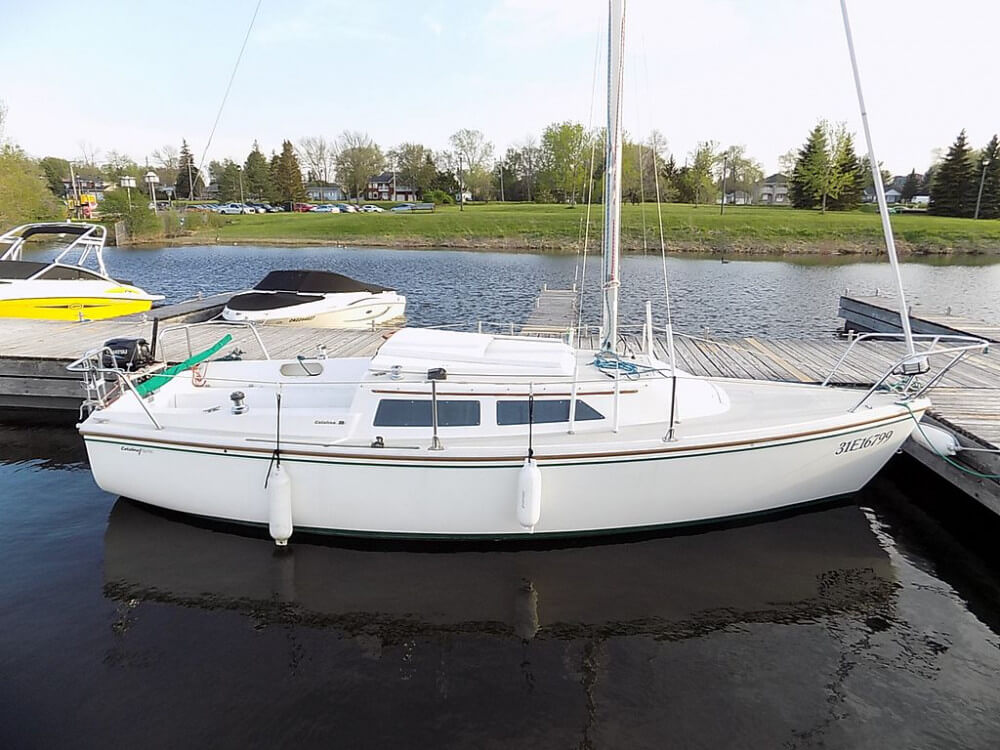
Ok, I'm very interested in how cheap you could actually go (in theory). Is it do-able to buy a very cheap sailboat and just keep her afloat, never change sails, and only pay for maintenance that is absolutely necessary to not sink?
In this scenario, I don't care about speed, so I don't change sails. I certainly won't join a sailing club, and I try to save some money on the marina by boondocking. I also happen to live in a cheap state registration and tax-wise.
Docking costs can get out of hand For an average sailboat, depending on your area and wishes, up to $5,000/year . Read everything about docking costs
I try to pay as little as possible for the boat itself (and I've actually found a Catalina 22 for $2,250 on Craigslist today!). I don't save up for rigging and hardware (tomorrows' worries). I try to get an extra 2 years out of my bottom paint and I only do the essential repairs, and I do them myself. But because I saved so much on the purchase, this little boat needs a lot of maintenance.
Luckily, I have time on my hands and know my way around engines and rigging, so I do all of it myself (with the help of YouTube).
I don't bother with winterizing my boat, I'll just sail somewhere warm. Oh, and I'll use the engine as little as possible to save on gas.
Will your boat be happy? Definitely not, but your wallet will be (for now). Can it be done? It's optimistic, but yes, I think it can be done. But you have to be mechanically inclined, and pretty creative.
The one-time costs are $2,428 Your total recurring costs are $1,380 per year, or $115 per month
Recurring Costs
3. low budget 35' ocean cruiser for traveling the world.

If you dream of crossing oceans, you need a comfortable ride. Usually, most sailors pick a boat that's between 32' - 50' for two person ocean cruising. Anything under 32' gets pretty uncomfortable in high waves, although it can be done.
But this is also the range that gets expensive - quickly . So if we're on a tight budget, but also need a good and reliable boat: how much will it cost?
The boat will cost you $35,000. For this price, I've seen a beautiful 1983 wooden cutter (by Robert Tucker), multiple Beneteau Oceanis from '88 - '89, multiple Bavarias ... plenty of solid choices on the second-hand market here.
In this example, you don't join any sailing clubs (I assume you're pretty experienced if you want to cross oceans). You also don't winterize (you're sailing the Caribbean by now). No trailer, as you won't haul it out of the water any time soon.
You do pay a fair price for the boat because you don't want any surprises during your Tour du Monde. In need of a lot of bottom paint , since you're in saltwater most of the time. It's also a good idea to invest in at least SOME navigation equipment, so for $500 I've added a simple but capable GPS chartplotter and compass.
You can get a cheap but reliable chartplotter and compass for less than $500 - in total. If you want to learn more, head over to the recommended gear section .
The one-time costs are $37,590 Your total recurring costs are $5,425 per year, or $452 per month
4. Powerful 40' Yacht (and everything that goes with it)
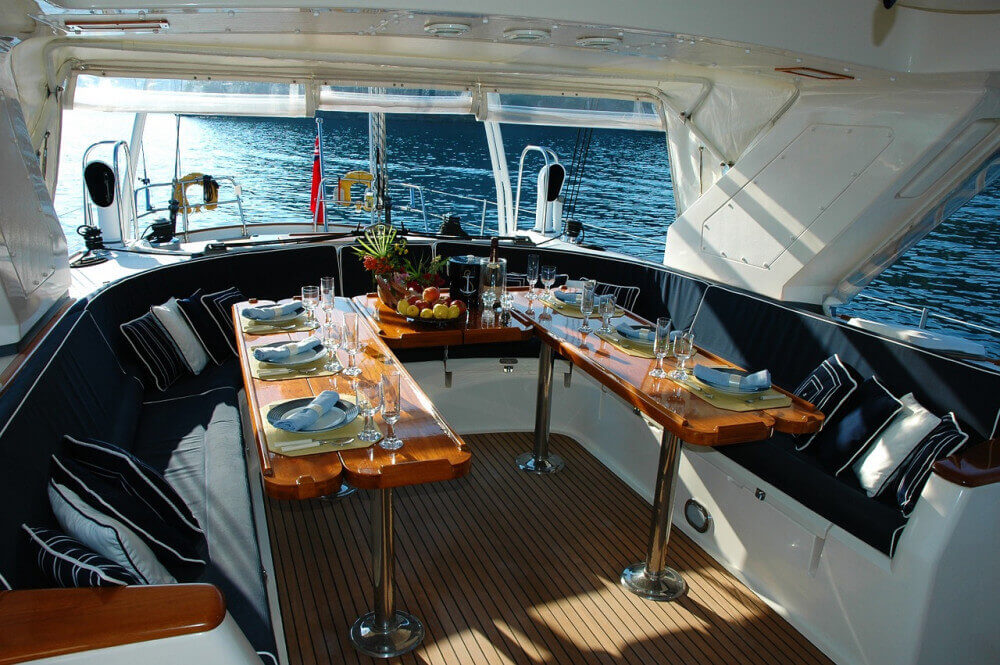
Let's say you're in the game for the fame. What does it cost me to own a grande yacht with all luxuries (and costs) that go with it?
I join an expensive sailing club, hire pros that maintain the thing beautifully, and I also pay for winterization, the best trailer I can find. I replace my sails and running rigging every 5 years - since speed matters to me. Because she's my pride, I paint her every year. I spend an additional 500 bucks a year on special soaps and waxes.
I want a prime mooring location, so I pay a premium. I also get a small boat to hang from the large boat, to get to shore more quickly.
The one-time costs are $166,400 Your total recurring costs are $15,150 per year, or $1,263 per month
There are a couple of important factors that determine how much money you end up spending.
- Size - length determines mooring costs, insurance, amount of paint on your hull, literally everything gets more expensive with every foot of length
- New vs. used - of course, it makes all the difference whether you buy new or used. Typically, the price of a 25-year old used sailboat vs. a comparable new one is 3-4 times lower ($60,000 vs $200,000).
With used sailboats, I find that the price generally increases rapidly from 30 feet onwards
It's the same with new sailboats - or actually, it keeps increasing with every extra couple of feet. The reason is that as the boat gets bigger, it also gets more luxurious (upholstery, finishing, equipment).
The average price of a new sailboat per foot in USD:
- under 30 ft: $3,217 per ft
- 30 - 50 ft: $7,625 - $11,128 ft
- over 50 ft: $14,927 - $78,033 per ft
On average, second-hand sailboats go at 1/3 - 1/4 of the cost of a new boat:
- under 30 ft: $1,773 per ft
- 30 - 50 ft: $6,473 per ft
- over 50 ft: $10,091 - $36,889 per ft
If this is too much for you, you could always rent a boat instead. I recommend chartering. You can get great sailboats at great prices. Check out my charter recommendation here .

Cost of buying a sailboat
Price of new sailboats.
I've looked at the prices of thousands of yachts (really) on one of the largest yacht marketplaces in the world (- not manually, don't worry: with the help of their search function). This is what I came up with:
Source: Yachtworld.com Q3 2023
The price of new sailboats ranges from roughly $1,765 - $78,033 per foot. I've used these numbers to calculate the following list:
Prices per foot in USD
Here's the detailed price per foot for all lengths from 20 to 100 feet:
Price of used sailboats
We did the same for used sailboats, comparing thousands of listings. Here are the complete data:
Source: Yachtworld Q3 2023
The price of used sailboats ranges from roughly $882-$36,889 per foot . Here's the detailed price per foot for all lengths from 20 to 100 feet:
Prices on Craigslist
The price of used sailboats ranges from roughly $476-$2,098 per foot.
To get an average of the price of a used sailboat, I went over to Craigslist. I took the first 20 relevant search results for sailboats under, and over 30 feet.
Of course, the averages here are very speculative, as prices vary from day to day. But it gives a broad range of what to expect.
Over 50 feet, listings become meagre. I believe people tend to not place their 80-ft sailboats on Craigslist, but sell it through a broker instead.
Median Craigslist price of a used sailboat:
- under 30 ft: $11,065
- over 30 ft: $87,020
I've calculated the median price , not the average. The median is the price that's most common within the price range. This way the highest and lowest prices don't have as much impact.
Average Craigslist price-per-foot of a used sailboat:
- under 30 ft: $476 per ft
- over 30 ft: $2,098 per ft
This is what I found on Craigslist under 30 feet:
Washington dc.
Source: Craigslist Washington DC Q3 2023
Los Angeles
Source: Craigslist Los Angeles Q3 2023
Source: Craigslist Houston Q3 2023
South Florida
Source: Craigslist Miami Q3 2023
Source: Craigslist New York Q3 2023
Here's what I found for 30 feet and up:
Sailboat price development.
Compared to our 2022 research, the median price of new sailboats has gone up 22.5% (from $251,000 to $307,500). The average price has gone up 33.6% (from $248,000 to $331,250).
The average price of used sailboats under 30 ft on Craigslist has gone up 30% (from $8,500 to $11,000).
Sailboat prices research archive
You can check our earlier research data here:
- 2022 average sailboat price data
- 2019 average sailboat price data

Catamarans are 60% more expensive
If you dream of owning a catamaran, you should expect to pay roughly 60% more for the boat, and 60% more on annual cost like upkeep and mooring. There are exceptions, of course, and for some boat lengths, new catamarans may be slightly more affordable than a monohull.
I've researched thousands of catamaran listings as well to come up with those numbers. The exact numbers are summarized in my guide on the average cost of buying and owning a catamaran. It's very similar to this article, so if you like this and are curious about catamaran prices as well, I encourage you to check it out.

Average Cost of Buying & Owning a Catamaran (With 4 Examples)
So let's take a quick look at the costs for owning a sailboat.
One-time costs:
- Registration : costs of registration differ per state, but usually run anywhere from $3 - $10 per foot.
- Taxes : differs per state and country. Most governments want you to pay property tax and sales tax. Sales tax is usually about 5%. Property tax varies and is more complex, so I'll leave that up to you to figure out.
- Trailer : $1,000
- Sailing club initiation fee : $1,500 - $4,000
Recurring costs:
- Mooring : $10-15 per foot per year (can be much higher for prime locations)
- Insurance : typically 1.5% of the total value of the boat. So a $50,000 26' cruiser will cost 750 bucks.
- Maintenance : a good rule of thumb is 10% of the boat value. Expect to spend anywhere between $500 - $2,500 per year for small to mid-sized boats.
- Fuel : depends on how much you use the boat and the engine, but on average something between $100 - $150. - Find out how much fuel a sailboat uses in my article here (opens in new tab).
- International License : if you want to sail on international waters, you have to get your ICC (International Certificate of Competence ). Plan on spending anywhere between 400 to 500 dollars.
- Safety equipment : plan on spending anywhere between 150 to 600 bucks for lifejackets, first aid kit, and distress signals.
- Winterize boat : $2,000
- Sailing club: $800 - $1,500

Cost of owning a boat

Maintenance
Your average maintenance cost will be roughly $144 dollars per month for boats under 30', or just under $2,000 per year.
Maintenance involves a lot of hidden costs We took an in-depth look at everything . The result is a comprehensive article that lays it all out for new boat owners. Read all about maintenance costs
Gas engines run for about 1,500 hours, diesel engines run for 5,000. After that, you'll need to change them out.
Most engines will last you about 20 years.
A standard 15HP or 20HP outboard gas engine will cost you about $5,000 - $6,000 and needs replacing every 20 years or so. If you do the work yourself, it's more something like $1,000 - $1,500.
A smaller engine uses less fuel, reducing your total cost You can actually use a pretty small engine for most sailboats. To learn how small (and efficient) you can go, I've written a guide on how to calculate it yourself. Read all about outboard engine size
Replacing the sails and rigging
Most people that own a sailboat will have to replace the sails and rigging at least once in their lifetime. Replacing the mast is uncommon, but if you're unlucky and get demasted, it will need to be fixed. So I've added it to the "be aware this might happen" list - but won't add it to the monthly recurring costs.
If you need to replace the mast and boom, prepare to spend anywhere between $15,000 - $25,000.
I won't go into detail, but I have written a long article about the cost of new sails (opens in new tab). It's a really helpful post (with a formula) if you want to know what to expect.
Good quality cruising sails will need to be replaced every 10 years or so.
The cost of new sails is on average:
- 26' Bermuda Sloop rig will cost you about $1,000 - $2,500.
- 34' Bermuda Sloop rig will cost you about $3,000 - $5,000.
The cost of the new rigging is on average:
- Standing rigging - every 10 years at $4,000
- Running rigging - every 5-10 years at $5,000
Bottom Paint
Your boat will need bottom paint roughly every 2 years (could be longer, but to be safe, let's keep it at two). It's also called antifouling paint because it helps to protect your hull from weeds, barnacles, and so on. Barnacles can slice through your boat's bellow! So you don't want them on there.
On average, it costs about $15 to $20 per foot to get your sailboat hull painted professionally.
For a 26' sailboat, that's just 500 bucks. Money well spent.
Replacing safety equipment
USCG safety regulations require you to replace safety gear regularly.
- Lifejackets have to be replaced every 10 years.
- Flares have to be replaced every 42 months. You could consider buying a LED electric distress light instead, which will last you a lifetime.
- If you carry a life-raft you'll need to replace that every 12 years as well.
Adhering to the minimum safety requirements shouldn't cost you more than 150 - 250 dollars every 5 years. But if you want the good stuff, need more fire extinguishers, plan on spending more like $600. If you want a life raft, that's another $1,500.
To avoid you have to go cheap on your safety gear, I've put it in the budget for $500.
If you want to know exactly what the USCG safety requirements are, including checklists , definitely check out my article here.
Winterizing your boat
Winterization is an often overlooked cost, but it can be one of the largest expenses each year. If you're like me, and not so lucky to live in Florida, you need to winterize your boat.
Failing to winterize it will increase your maintenance cost over time, as the engine wears out more quickly, and your plumbing and equipment will fall apart. Winter storms and ice can damage the hull and mast as well. Learn all about the dangers of failing to winterize here .
It's the best way to protect your boat in wintertime, period.
It consists of two parts:
- Winterizing - costs $500 to $1000 - This is the preparation for winter storage. You flush the cooling system with anti-freeze, and the boat gets wrapped in a shrink wrap cover.
- Winter storage - costs $50 per ft on average
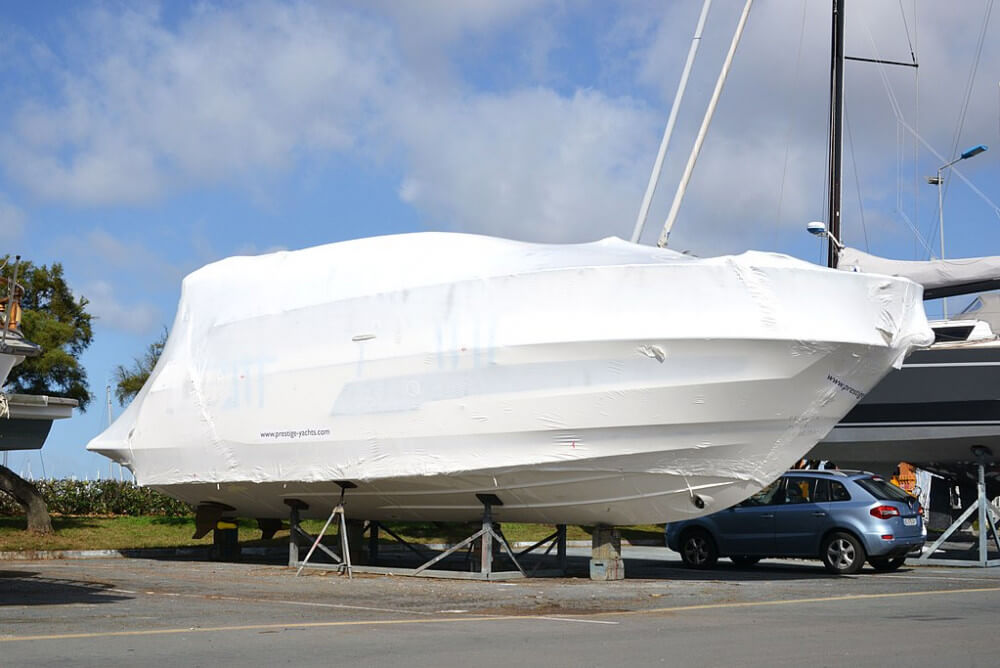
Some other maintenance costs:
- Batteries: deep cycle batteries need replacing every 4-6 years at $600
- Deck hardware: every 20-30 years (bullseyes, tiller, eye straps) at $1,500
Joining a Sailing Club
If you're new to sailing, you might want to consider joining a sailboat club. This might help you to get tips, make friends, and learn in a safe environment. Most clubs also organize races, which are a great way to quickly improve your sailing skills.
But it comes at a cost. Sailing clubs are very expensive.
Initiation fees range anywhere between $1,000 - $4,000. But that's not all.
Then there's an annual fee of $500 - $1,000 per year. And lot's of additional fees: for dining, lockers, etc.
If you're willing to skip Christmas, go for it.
How about making up for some of those losses? There's just no better feeling than earning back all that cash with the same thing that you've spent it on in the first place.
There are lot's of ways to earn a little extra with your boat - if you're willing to put in the effort. Here are a few ideas:
- hire yourself out as the captain of a personalized cruise (for families, newly-weds, groups of colleagues)
- take people to go fishing
- hire your boat out to yacht charter companies
- teach someone to sail
- take photographers, film crews, and artists on tours
- organize dolphin and whale watching tours
- delivery of cargo - some places just can't be reached by car, for example, the city center of Giethoorn (Dutch Venice). So you have a competitive edge here!

Some ideas to save money:
- install solar panels (no more dock power)
- buy a and cheap small boat (kayak or someting) to get to offshore anchorage (which are cheaper)
- shop around for insurance
- get gas at the gas station, not the marina
- do your own maintenance as much as possible
- find a friend with water access to avoid mooring
- use it a lot (prevents stuff from breaking)
- fix things that are broken immediately
- keep your sails out of the sun
- do your own upgrades
For example, convert your winches to self-tailing yourself. I was really surprised by how cheaply this can be done yourself. Read my article on how to do it here (opens in new tab).
How much does it cost to paint a boat hull? Painting a boat hull with antifouling paint will usually cost between $15 - $20 per feet. For example, a 25-foot sailboat will cost roughly $500. A 35-foot sailboat will cost $800 to repaint. You can get premium paints and services, which can quadruple the cost. Typically, a boat needs to be repainted every two years.
Why are used sailboats so cheap? Sailboats require a lot of skill and patience. They can be quite expensive to maintain and to keep in slip. Some people find they can't afford the marina rent, upkeep, and other costs; sometimes they simply don't want to; others don't want to sail anymore. In some cases, expensive and important parts are missing.
How much does it cost to charter a sailboat? The price of a charter depends on location, size of the vessel, crew or bareboat chartering, and so on. However, on average, a bareboat yacht charter will cost anywhere from $5,000 - $10,000 per week. Crewed charters cost anywhere between $10,000 - $15,000 per week. Superyachts may cost up to $150,000 per week.
Thanks to Jean-Pierre Bazard for letting me use his wrapped boat photo under CC BY-SA 3.0

Excellent write up. This is honestly the type of information that’s hard to find as you’re trying to get into sailing. I’m a car guy. People think of car collecting like Jay Leno, but it can be done cheaply. I get the impression sailing is the same way.
Shawn Buckles
Hi Stephen, thanks a lot for your kind words, really appreciate it! It really is kind of the same, it’s all about how much time and effort you’re willing to put in. As with anything, lots can be achieved with energy and attention.
Thanks again.
Serious question. Why are you buying a trailer for a 40 ft yacht? That doesn’t even make sense.
Hi Christian, thanks for the remark. 40 ft boat trailers do actually exist, although I agree that most people probably won’t trailer a 40 ft yacht.
Thank a lot for the very useful information„ now you caused me to start thinking why don’t I start sailing lessons to do round the world in a sail boat ( instead of an aircraft)
Hello Hatem, you’re very welcome. Smooth sailing, or flying.
Hi, I am not familiar with boats. My boss just asked me to find a nice boat for him. Thank you for this informative post, this helps me so much. By the way, I already found a site selling yachts here in the Philippines, here’s the link https://rayomarine.com Do you have any suggestion with brand and boat type. Thank you! More power!
Very good information, but I am having a hard time matching these number here in Southern California. Cheapest slip I found so for is $375/month, on a very run down and far from the ocean marina. At the harbor that I want, the cheapest I found is $800/month. Even if I was given a boat for free, just keeping it in place would cost me almost 10k/year
Excellent writeup, Shawn! Thank you very much for all your hard work and I look forward to reading your other articles on the subject.
Great info! We are in the market for our first sailboat and this answered many of our questions. Although I do agree with Rafael that slip prices in Southern California our much higher than what you listed. The marina we like will run about $1000 a month.
Thank you for your artical…a LOT of useful information included in it sir. I have been thinking about buying one for two years now, since I moved to a harbor town near where I grew up. We always had motor boats when I was young. But, I always loved sailing MUCH much more! I love the quiet of it, and always something to do, rather than just sit, drive, gas it up, dock, repeat. Laugh!! It’s about a ten min walk to the marina from here..and I have nothing but time. However my health is pretty bad. I just don’t know if I could handle it all alone. I’m thinking maybe a 25-30 foot cruiser. Thanks again sir!! I look forward to reading your other articles. Sincerely, Gary Heaton Olcott, Ny
Thanks a million! First time I come across an article that complete and with so much effort. For people thinking about buying a boat the info you provide is priceless.
John Callahan
Good information, but any article on prices should have a date associated with it. I see no indication of when this article was posted.
Thank you so much for this well done article. We’re looking at getting a boat and you’ve answered questions we didn’t even know we had.
Awesome article good job i am from Slovenia and thinking about buyng sailboat and sail for 6 monhs per year.I hawe bean looking on Holland sites too buy one can i maybe find auctions too buy a sailingboat i bawe wach Troswijk but they do t hawe any up ther?
Many of the costs quoted look very low to me, especially in the first article. Was this written a long time ago?
Excellent article. Am wondering though how do I dispose of a used boat if I get tired of it and can’t sell it or possibly run it aground. Maybe a 40 ft sloop?
Chris Kenny
Thanks for this infor.
Peace sailing.
Benjamin Sklar
Extremely helpful and interesting article! Thank you!
John Wallace
This is the most accurate information I have ever seen about boat ownership costs.
Many thanks!!!!
Leave a comment
You may also like, how much does it cost to dock a boat for a year.
Before buying your first boat you probably want to know how much it will cost you each year. So did I, so I checked hundreds of slips, and here are the numbers I …

Average Cost of Buying & Owning a Catamaran (With 4 Examples)

Cost of Catamaran vs. Monohull: Which is more expensive?

9 Ways to Learn to Sail for (Practically) Free

How To Live on a Sailboat: Consider These 5 Things
Own your first boat within a year on any budget.
A sailboat doesn't have to be expensive if you know what you're doing. If you want to learn how to make your sailing dream reality within a year, leave your email and I'll send you free updates . I don't like spam - I will only send helpful content.
Ready to Own Your First Boat?
Just tell us the best email address to send your tips to:
Page Loading
- Vessel ltinerary
- Administration
- Dockage & Fuel
- Maintenance
- Capital Repairs & Reserves
- Total Expenses =
- Name Length Build
- # Total Expenses Date Saved
Advanced functionality coming soon.
Us flagged vessel, health insurance costs per crew, uniform cost per crew, training cost per crew, food cost per crew, crew turnover, hires using a professional crew agency.
- Restore Default
- $ | € | £
Costs of food provisions will vary dependent upon how eloborate food Preferenaces are
Location will play huge factor in food provisons and thing may have to be folws into remorte locations.
Crew is one of the largest expenses on a superyacht and critical to the owner’s enjoyment of their vessel. As the largest crew agency in the world, we know crew. Our cost calculator contains customized crew lists for yachts ranging from 80ft to 600ft with salary information based on our reference verified salary data.
Our users also have the ability to completely tailor the crew list to the specific needs, schedule and requirements of their vessel. Each yacht is unique and may have specific owner requests in addition to the yacht’s safe manning requirements.
Management of the supplemental crew costs and strategic budgeting can help avoid significant overspend on categories such as food and uniform. This tool contains default values based on our industry expertise and recommended budget for an efficiently and safely run superyacht.
To learn more about each crew position in detail, including salary ranges, please visit our yacht department directory .
Drag the sliders to modify your results. These are not linear scales and we expect most yachts to operate within the 20-80% window. Above 80% and below 20% costs increase or decrease at exaggerated levels and we only see numbers in these levels in very rare circumstances.
This sunburst diagram is interactive. You can click into each block to see the expense break down and mouse over each block for more details.
Our chart of accounts displays seven major categories, 20 sub-categories plus a further 80 detail categories for a total of 107.
Our yacht operating cost calculator is now on it’s third major revision. We start with actual yacht expense data from our yacht management accountants and then generate formulas to extrapolate out the budget for a wide range of yachts. We have been providing accounting services to large yachts for the past 18 years.
Our operating cost calculator is tuned for yachts from 80 to 600 feet. We find operating variables create the largest variances for yachts smaller than 100 feet and larger than 250 feet. We have tested the numbers the most in the range from 100 to 250 feet.
Our budget calculator factors in the fuel burn for a range of engine sizes typically seen installed on yachts by length. By dragging the green “fuel dockage” slider to the right you will increase the projected fuel burn rate and therefore the budget cost for fuel. Our default position would be for a typical displacement fuel burn. Position the slider in the 60-80% range for fuel projections for planning hulls.
Our default values produce a budget number that we believe is generous to run a yacht to a high standard. Perfect is a very expensive word to use in the yachting industry where standards are already high. Moving the crew and maintenance sliders to 80% will provide an “industry best” quality of crew and give them the maintenance budget to operate to a very high standard. If you need to go over the 80% area then you may have unusually labor intensive equipment on the yacht.
Yes, our yacht operating cost calculator can output a budget suitable for this situation. Adjust the owner use to 2 (minimum value), owner slider to 0, crew slider to 10%, Administration to 10%, Fuel and Dockage to 0, Maintenance to 10% and then Capital Repairs to 0. This will remove all of the large charges associated with owner use and vessel movement but leave the essential base maintenance and insurance in place.
Lift on and float in yacht transport is a popular way to transport yachts across large ocean passage. The yachts that this service certainly applies to are ones that may not have the motoring range or structural integrity for blue ocean cruising. The cost of transporting a yacht twice per year is put into our budget once the “Fuel Dockage” slider hits 75%. If your yacht has the range we recommend self-sufficient ocean passages whenever possible. Whilst the transport companies sell their services based upon reportedly well oiled operated schedules the reality is that your yacht may stay waiting for pickup for a week or more with no compensation due. When factoring in all secondary factors of self-sufficient passages (increased fuel, maintenance, potential storm damage, crew time off, extra delivery crew) compared with transporting your yacht (insurance, potential loading / unloading damage, loss of schedule control, no work whilst underway, crew flights, crew accommodation) we believe that there is a 100% premium associated with float in transport and a 75% premium with lift on transport compared with self-powered.
Abandoned yachts crash in value. We recommend that even if you are trying to sell your yacht that you use the yacht for a minimum of two weeks per year so that systems are tested and working every six months. There is nothing worse for a yacht than not being used. If you truly are not going to use the yacht then you should sell it immediately for the first genuine offer as every dollar you put into maintenance will not be recovered at the time of the sale.
We did not build this version with sailing yachts in mind. Early in our development of this version we decided to exclude sailing yachts as a few of the major cost drivers scale very differently for sailing yachts compared with motor yachts. For example: To calculate paint costs we reviewed the surface area of over 100 large yachts and created a formula for painted surface area to length. Sailing yachts just don’t scale in a consistent way. Similarly crew numbers don’t scale in the same manner that they do for motor yachts. If there is sufficient demand we may build a sailing selector switch into a future version of this tool.
We hate to hear when yacht owners were told by their broker to factor in 10% of the purchase price to operate the yacht. This over used saying is sadly right occasionally (particularly for newer yachts in the $20-30M range)… but just because a broken watch tells the right time twice a day you shouldn’t rely upon it to tell the time. As yachts get older their capital value decreases but their maintenance costs increase. There is no way that a fixed 10% of purchase cost rule can be true… if your broker told you this rule then you need a new yacht broker… we know some good ones. 😊
Advanced functionality coming soon…
We are building advanced tools to allow you even greater control over our operating cost calculator. Please enter your email address below to be advised when it is available.
Save this version
Share your calculations, please save version before sharing luxyacht - calculator, you must be logged in to save this version of the cost calculator that you have customized for your yacht..
- All boats for sale
- Reduced boats
- Recently surveyed boats
- Saved boats
- Boating Basics
- Buyers Guide
- Part Exchange your boat
- Register for boat updates
- Sales Process
- Surveys and Surveyors
- YouTube videos
- Buying from Venetian Marina
- Testimonials
- Part Exchange
- Why sell your boat with us
- Vendors Login
- Available Moorings
- Mooring Price List
- Mooring Site Map
- Sales Office
- Cover & Canvas
- Dee's Venetian Tea Rooms
- Chamberlain Chandlery
- History of Venetian Marina
- Meet the team
- Recruitment
- Caravan Storage
- Cosgrove Park
- Whilton Marina
- Covid 19 update
- Cruise destinations from Venetian Marina
- Local Accommodation
- Local Attractions
- Useful links
- Youtube Videos
Blog Categories
- Narrowboat Advice
- How to Guides on Narrowboating
- Living On A Narrow Boat
- Maintenance and Repair
- Narrowboating Cruises
- News From Venetian Marina
- Selling A Narrow Boat
- Crick Boat Show
- Customer Stories
- Canal Rules and Regulations
- Must Attend Boating Events
Blog Archive
- January 2022
- September 2021
- December 2020
Living aboard a narrow boat
We are frequently asked by people who are new to boating, what the yearly costs to living aboard would be? This depends on a few factors including your boats size and where you are intending to moor. But to give you a general idea we have put this guide together. Living aboard is a life style choice and shouldn’t be seen as a cheap way of getting on the property ladder. As with buying a house when you purchase a new or used narrow boat there are going to be costs involved. These costs are divided into two sections fixed and variable.
The fixed costs for living aboard in the UK
Moorings within a Marina
This is more than likely going to be your biggest cost in this section. As you can appreciate, the length of your boat and where in the UK you want to moor is going to determine the final cost. Mooring in Central London is going to be far more expensive than say against The Fens. You will also have to take into consideration the facilities that are on offer, like security, shops, pump out and other amenities. So the final cost for moorings within a marina will depend on location, facilities and boat size.
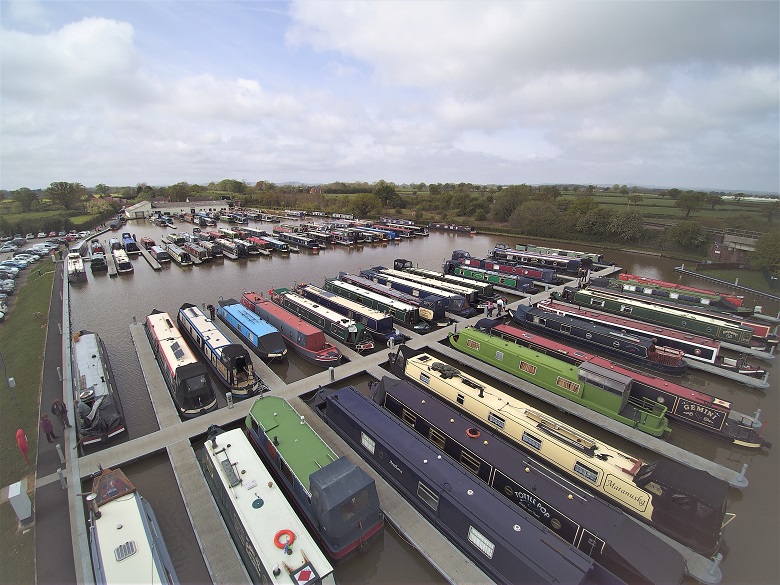
Moorings along the canal
The CRT (Canal and River Trust) long-term moorings on the canal network are often an economical proposition. The down side with this option is there are limited facilitates to no facilitates on some moorings and you should bare this in mind. It is also very difficult to obtain these types of moorings.
Club moorings
These are often less expensive and bring the advantages of social life - but with responsibilities too.
Licence Fees
Licence fees will vary according to where you keep your boat as well as the boat size. You can register your licence for 12, 6 or 3 months. CRT offer a prompt payment which is less then the cost of the licence if it is paid before the old licence expire, this can now only be obtained if you purchase your licence online. Click HERE for more information on costs.
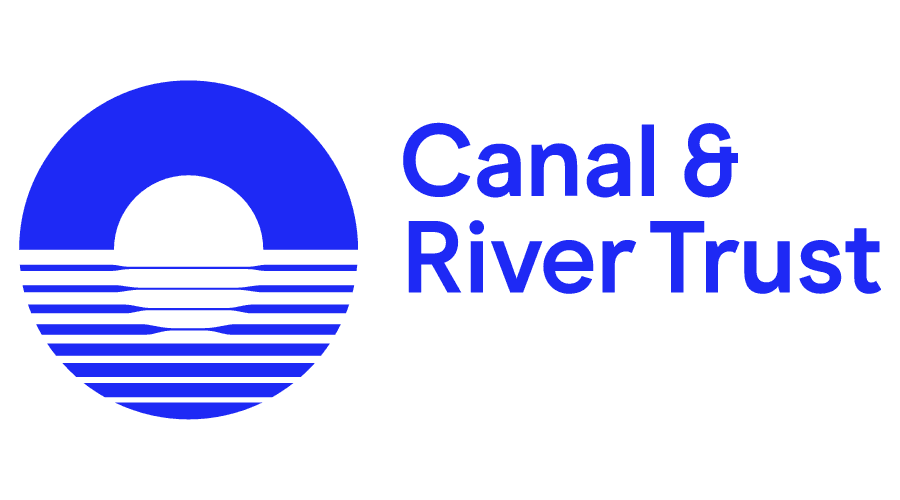
Insurance costs around £250-£500 per annum, but will depend on your boat and whether you are cruising. There are many insurance companies that you can use but our advice is to employ an insurance company that specialises in narrowboats. It is worth shopping around as some insurance policies also include RCR ( River Canal Rescue) cover.
Blacking every three years
You would be looking at £820 to £1500, dependant on the length of your boat and which type of blacking you want to use. The main two types are bitumin blacking and two pack epoxy resin. You can do this yourself which would reduce costs.

The Variable Costs
Estimating the variable costs can be rather difficult, but we will try to list as many things you need to take into consideration and give you an estimated price. Please remember these costs will vary from boat to boat.
Engine fuel and fuel for Heating
Red diesel will be cheaper than the diesel that you purchase from the forecourt, and prices will depend on the chandlery and the location from where you make your purchase. You need to declare to the chandlery the percentage of your fuel which will be used for your engine and then if applicable what will be used on your diesel central heating. The typical split of your bill can be 60% for engine and 40% for heating. The chandlery will be able to advise you on the best rates for you depending on your personal usage.
Fuel for Heating and Cooking
If using diesel as your heating supply (see above). Other options for heating and cooking are gas bottles and solid fuel. Solid fuel in the winter 10-15 bags a year around £150. Gas for central heating and cooking, using six bottles a year - about £180.
This will depend on the tank size of your boat. Here at Venetian Marina the Chandlery currently charge £19 per pump out.
Emptying a cassette toilet is usually free at most marinas. There are also other CRT points along the canal system where you can dispose of your waste.
Engine maintenance
The engine oil will need to be changed at least three times a year. Engine Service should be done every year or two and can cost up to £250 plus VAT.

If there is anything we have missed off this guide and you would like to know the answer, please leave us a comment or contact us on 01270 528251 and we will be happy to answer any of your questions.
Other Recent Posts
Politics latest: Scottish government facing confidence vote; first failed asylum seeker flown to Rwanda
The Scottish government is facing a vote of no confidence this afternoon following the dramatic resignation of the first minister earlier this week. Meanwhile, the UK has sent the first failed asylum seeker to Rwanda under a voluntary scheme.
Wednesday 1 May 2024 07:10, UK
Please use Chrome browser for a more accessible video player
- The UK sends first failed asylum seeker to Rwanda on voluntary scheme
- Kate Forbes confirms she is considering standing to replace Humza Yousaf as SNP leader
- John Swinney - another potential candidate - issues call of unity in Sky News interview
- What you need to know about Forbes and Swinney
- The contest explained | Why Yousaf resigned
- Tory MPs threaten to rebel against government over leasehold reform
- Local elections: Everything you need to know about this week's votes
- Live reporting by Charlotte Chelsom-Pill
With Humza Yousaf stepping down as Scotland's first minister and SNP leader, Scotland reporter Jenness Mitchell takes a look at some of the potential candidates that could throw their hat into the ring to take the top job.
Nominations have now opened in the SNP leadership contest to find a replacement for First Minister Humza Yousaf after he announced he was stepping down.
Senior figures have backed former deputy first minister John Swinney for the top job, while a smaller number of the party's parliamentarians have backed former finance secretary Kate Forbes.
Mr Yousaf has said he will stay on to allow a successor to be chosen.
How does the contest work?
The SNP's national secretary announced nominations had opened Monday at 11.59pm.
They will close next Monday.
Prospective candidates will need to gain the support of 100 members from 20 different SNP branches in order to qualify for the contest.
What happens next?
Whoever wins the contest will then need to be able to win enough votes in Holyrood to be elected first minister.
The SNP needs just two votes to secure an overall majority.
The most likely backers for the SNP would be the Greens, given both parties are pro-independence.
However, the Greens announced last week they would not support the first minister in a confidence vote after Mr Yousaf scrapped the powersharing agreement between the party and the SNP, which eventually led to his political downfall.
By Jenness Mitchell , Scotland reporter
A motion of no confidence in the Scottish government is due to be debated later on Wednesday.
Scottish Labour is pressing ahead with its motion despite Humza Yousaf announcing earlier this week his intention to stand down as SNP leader and first minister.
If the motion passes, all ministers in the minority SNP government will be forced to quit.
The Scottish parliament will then have 28 days to appoint a new first minister, failing which, a snap election would be called.
Despite having the backing of the Scottish Tories and Liberal Democrats, it is not expected to pass as it does not have the support of the Scottish Greens.
The debate and vote comes following the breakdown of the Bute House Agreement.
Within hours of the powersharing deal with the Scottish Greens coming to an end last week, Scottish Tory leader Douglas Ross announced he would be bringing a motion of no confidence in the first minister.
Angry over the way the party was dumped from government, the Scottish Greens announced its MSPs would be backing the motion.
Scottish Labour then announced it was planning a motion of no confidence in the Scottish government.
Read more here:
By Serena Barker-Singh , political correspondent
Tory MPs are threatening to rebel over the government's new housing proposals.
In a letter to Chancellor Jeremy Hunt, more than 30 Tory MPs have stated their dissatisfaction with the current leasehold system and implore the government to scrap ground rent on leasehold properties.
Currently, there is no cap on the amount freeholders can charge existing leaseholders for "ground rent". That's the money to literally have property on the ground that their freeholders own.
Housing Secretary Michael Gove previously called that "a charge for nothing" and has stated a personal preference to move towards a "peppercorn" system, where ground rent is as close to zero as possible.
Multiple Tory MPs who have signed the letter are also in favour of this proposal - citing that promise made in the Tory 2019 manifesto.
They wrote: "It's time to finish what Margaret Thatcher started and implement peppercorn ground rents and other much needed reforms to leasehold."
They also state that many of their constituents are stretched with the cost of living and that MPs have seen the "human misery and financial stress" the "feudal" system of leaseholding supports.
The letter says the reforms to leaseholds they want to see are crucial to upholding Tory aspirations of creating a "property owning democracy".
Read more here:
By Tim Baker , political reporter
The UK has sent the first failed asylum seeker to Rwanda under a voluntary scheme.
The scheme is for those who have gone through the asylum process and had permission rejected, rather than for migrants who have illegally entered Britain by crossing the Channel on small boats.
The migrant was sent on a commercial flight and handed a fee from the British taxpayer to help relocate under the terms of a deal with Rwanda.
According to The Sun, the man of African origin claimed asylum in the UK but was rejected at the end of last year. He then accepted the offer to go to Rwanda.
He left the UK on Monday.
This was not done using the powers set out in the Safety of Rwanda Act, but rather run a parallel scheme that allows someone to choose to make the trip if their attempts to claim asylum in the UK fails.
And upon arrival in Kigali, the person is able to claim around £3,000 in UK taxpayer money as help.
The development was criticised by both the Labour Party and Reform UK director Nigel Farage.
Welcome back to the Politics Hub on Wednesday 1 May.
Here's what's happening today:
- It's the final day of campaigning ahead of Thursday's local elections;
- A motion of no confidence in the Scottish government will be debated this afternoon. It comes after First Minister Humza Yousaf resigned earlier this week;
- The Scottish National Party is searching for a new leader, with two key figures saying they are considering running for the leadership;
- Equalities minister Kemi Badenoch is calling on people to give examples of organisations issuing incorrect guidance on single-sex spaces, with an aim to "tackle any confusion" on the matter.
We'll be discussing all of this and more with:
- Kemi Badenoch , secretary of state for business and trade and minister for women and equalities at 7.35am ;
- Bridget Phillipson , shadow secretary of state for education at 8.15am ;
- Michelle Thomson , MSP for Falkirk East at 9.15am.
Follow along for the latest political news.
We'll be back from 6am with all the latest from Westminster.
But until then, here are the headlines:
Ireland's prime minister has insisted the UK must respect an existing arrangement between the two countries to take back asylum seekers.
Simon Harris told Sky News the UK must honour a deal that has been in place since 2020 as a row escalates over the Irish government's new plans to return to the UK asylum seekers who cross the border into the Republic from Northern Ireland.
Irish justice minister Helen McEntee told a parliamentary committee last week that more than 80% of recent arrivals in Ireland came via the land border with Northern Ireland.
The UK government has said it will not take back asylum seekers who cross the border into Ireland "until the EU accepts that we can send them back to France".
You can read more from Sky News below:
Scotland's First Minister Humza Yousaf has resigned – days after he cut the SNP's powersharing deal with the Scottish Greens.
It followed a bitter row over the SNP's climbdown on climate targets as he said the agreement between the parties had "served its purpose".
As a result, his former Green allies teamed up with the Conservatives, Labour and Liberal Democrats to get behind two no-confidence motions, one in himself as leader of Scotland and another regarding the entire Scottish government.
Now attention turns to another SNP leadership contest and what the divisions in Scottish politics could mean for the future of the independence campaign.
On the Sky News Daily , Matt Barbet speaks to Paul Hutcheon, political editor of the Daily Record, and Shona Craven, from The National, about how the SNP can move on after Mr Yousaf's resignation.
Plus, Connor Gillies , our Scotland correspondent , explains how the leadership election will unfold.
The Sky News live poll tracker - collated and updated by our Data and Forensics team - aggregates various surveys to indicate how voters feel about the different political parties.
With the local election campaign well under way, Labour is still sitting comfortably ahead, with the Tories trailing behind.
See the latest update below - and you can read more about the methodology behind the tracker here .
Be the first to get Breaking News
Install the Sky News app for free


IMAGES
VIDEO
COMMENTS
A typical yacht price can range from £5,000 to £5,000,000, dependent on your specific requirements. Maintenance fees, including insurance, mooring, and equipment, can be 5-10% of the yacht's value annually so is a vital factor to consider when you weigh up the costs of buying a sailing yacht.
For others a £20,000 deposit, plus monthly costs of less than £1,000 would happily suffice. Similarly, I know people who run well maintained 35ft boats for less than £100 per month. And others who spend 10 times that amount. Nevertheless, prospective boat owners are right to investigate the potential costs of their purchase.
At the lower end of the market, it's possible to get third-party-only cover from under £100 per year, while a standard fully comprehensive policy for a yacht worth £100,000 can be as little as 0.5 per cent of its value. Moorings are often the biggest annual cost of boat ownership. The more convenient the location and facilities, the more ...
In the UK, the average cost for this can range between £200 to £500, and it's advised to service your boat annually. Your sails and rigging also need regular inspection and occasional replacement. ... Operational cost of boat ownership The operational costs of yacht ownership extend to provisions and essential equipment's inevitable wear and ...
In this blog article, we will provide all the information you need to know about owning and sailing a yacht in the UK. From qualifications needed and safety regulations to license requirements and insurance options, get ready to set sail with all the knowledge you need! ... The licence lasts for 12 months and costs £45. You can apply for a ...
Initial Purchase Costs. When it comes to boat ownership, one of the most significant expenses is the initial purchase cost. Buying a new boat can be a substantial financial investment, with prices ranging from a few thousand pounds to several hundred thousand pounds or more, depending on the type and size of the boat.
For a sailboat between 12 and 15 meters (39-49 feet) in length, the fee is £211 for an examination or £160 for a re-examination. For a sailboat over 15 meters (49 feet) in length, the fee is £263 for an examination or £211 for a re-examination. It's important to note that these fees are subject to change, and the actual cost of the BSS ...
The average price of a yacht in the UK is difficult to determine due to the variety on offer. A yacht can cost anywhere from around £10,000 to several million pounds before you start to get into super yacht territory. That said, a mid-sized sailboat should cost you between £50,000 and £100,000.
Essential Guide: Buying and Owning a Boat. The Association of Brokers and Yacht Agents (ABYA) offers some expert guidance for UK boaters who are thinking of owning a boat for the first time. Owning a boat for the first time can be a wonderful experience. The UK is a great place to go boating and has a buoyant and varied used boat market that ...
Annual mooring fee: £420 x 9.75m = £4,095. Additional costs of maintenance, insurance, fuel, depreciation: £4,095. Total average cost to budget each year: £8,190. We understand calculating the cost of owning a boat for the first time can be a tricky task - and we hope this article has been informative and helpful.
Mooring is going to cost you plenty. Fortunately, it's a fixed cost from year to year, and that makes it easy to plan for. Decide where you'd like to be based, get a quote, and do the math. But don't forget to include off-season hauling and storage costs, if you live in an area where boats come out of the water during the winter months.
There's no exact formula for calculating the annual cost of owning a boat, only the experienced can guess the cost without having to put in much effort and even then they only know the costs of their own boat. Each boat is unique and asking someone more experienced than you is not always the solution. The annual costs are approximately 10% of ...
This will cost between 1 and 2% of the boat's market value per year, i.e. around £1,500 per year for a boat worth £100,000. Most companies require a survey before covering a boat of a certain age. This is a wise precaution anyway, as it gives you an estimate of the condition and real value of your boat. They survey will set you back around £700.
Maintenance costs for a boat can be around 10% of its value per year, and unexpected repairs may also be necessary. Owning a sailboat can be affordable, with prices ranging from $1,500 for a used sailboat to $250,000 for a new sailboat. The average price of new sailboats is $250,000, ranging from $96,000 to $654,000.
What Does it Cost to Buy a Sailboat? The average price of a new sailboat per foot in USD: under 30 ft: $2,400 per ft. 30 - 50 ft: $5,700 - $8,500 per ft. over 50 ft: $11,900 - $65,400 per ft. On average, second-hand sailboats go at 1/3 - 1/4 of the cost of a new boat: under 30 ft: $815 per ft. 30 - 50 ft: $3,020 per ft.
Yachts of this size generally cost between £25,000 and £50,000, while roomier, more performant sailing yachts can upwards of £100,000. Costs of buying a new yacht. Besides all the typical mooring, fuel and other certifications, new yacht buyers will encounter some potential hidden charges:
Boat Ownership Cost Calculator Use our simple 4 step boat ownership cost calculator to examine the annual running costs of any boat you are considering purchasing. Step 1 of 4: Boat details
Boat licences and fees. You usually need a boat licence. This costs around £500 to £1,000 per year and gives you permission to use the waterways. You must display the licence on both sides of your boat. You also need to pay a mooring fee if you rent a mooring.
As a very rough estimate, for a 50-foot boat, it costs around £4,000 a year to run. Licence £750. Marina mooring £1,900 (Can be considerably more in the south east; residential moorings may cost up to 50% more.) Insurance (on £20,000) £250. Hull blacking (bi-annually) £300.
Best-value ocean cruiser (40') $166,000. $1,300. The average price of new sailboats is $425,000 ($127,000 to $821,000). The average price of used sailboats is $278,000 ($67,000 to $555,000). Maintenance costs are on average $2,000 - $3,000 per year, and the average total annual cost is $3,000 to $7,000. Of course the price of a sailboat depends ...
Yes, our yacht operating cost calculator can output a budget suitable for this situation. Adjust the owner use to 2 (minimum value), owner slider to 0, crew slider to 10%, Administration to 10%, Fuel and Dockage to 0, Maintenance to 10% and then Capital Repairs to 0. This will remove all of the large charges associated with owner use and vessel ...
Engine Service should be done every year or two and can cost up to £250 plus VAT. If there is anything we have missed off this guide and you would like to know the answer, please leave us a comment or contact us on 01270 528251 and we will be happy to answer any of your questions. venetianmarina.co.uk.
The Home Office claims in a new document that the government of Rwanda has agreed "in principle" to accept 5,700 asylum seekers from the UK, but admits only 2,143 attend regular check-ins and "can ...
The number of children living in temporary accommodation has reached a record high. Some 145,800 children were in temporary accommodation as of the end of December last year, up a fifth on 20 ...
The inaugural flight of the UK government scheme to send asylum seekers to Rwanda was stopped in June 2022 at the 11th hour, after an intervention by the European Court of Human Rights (ECHR).